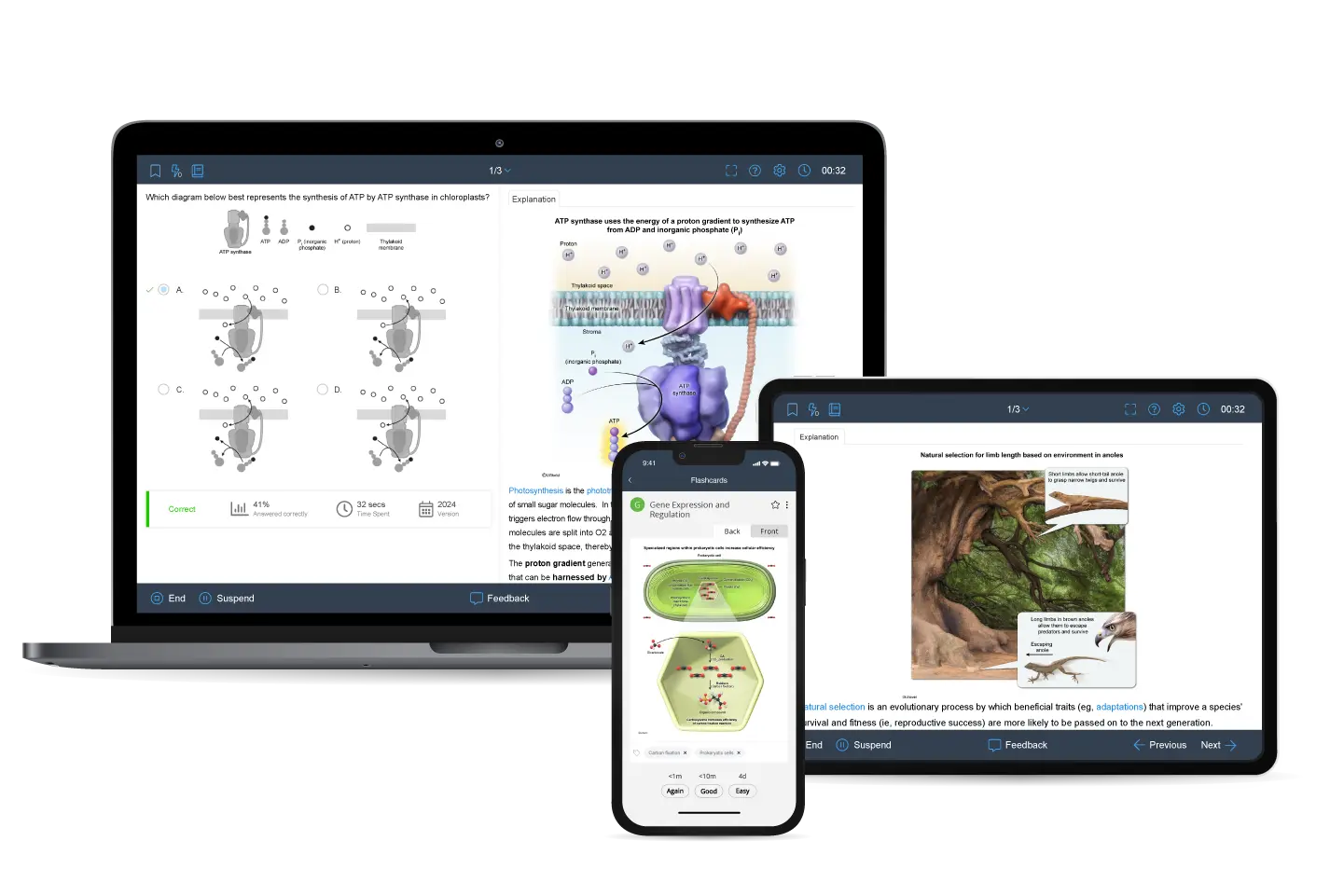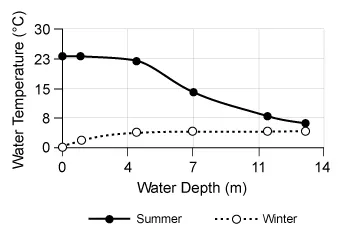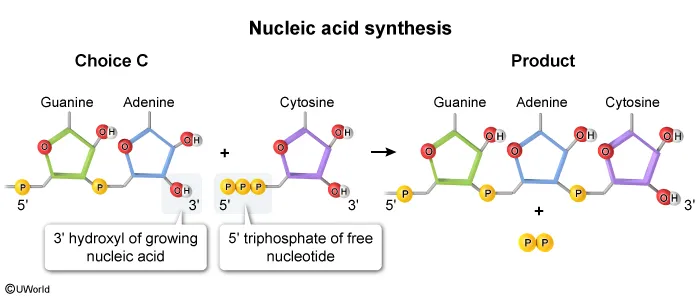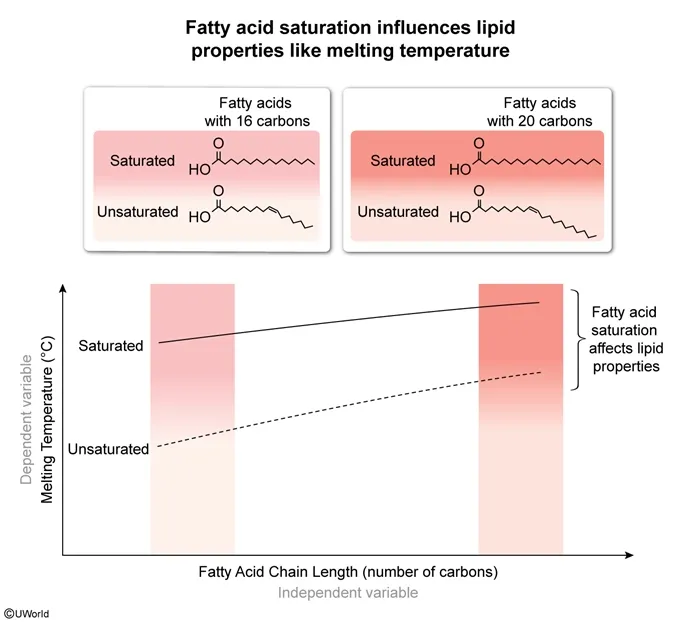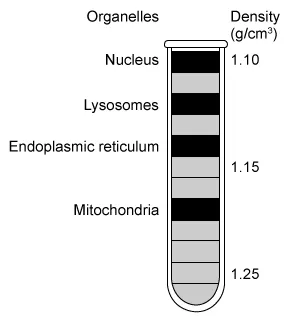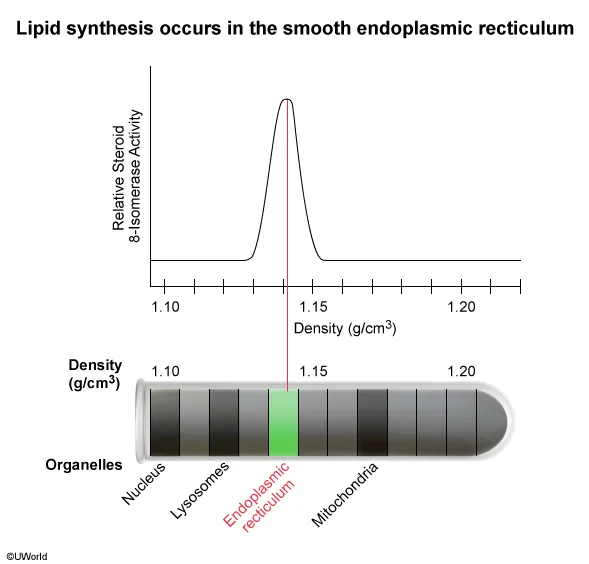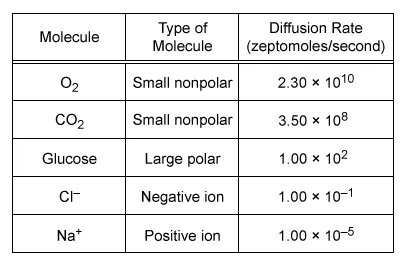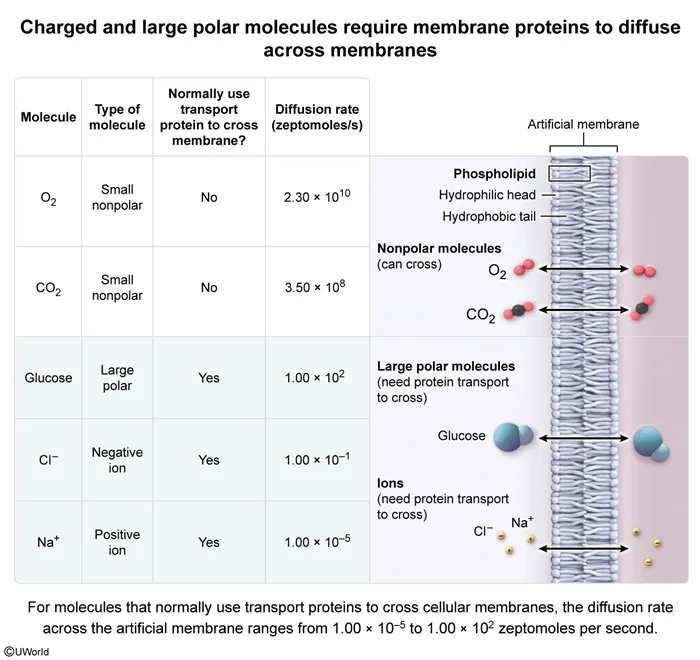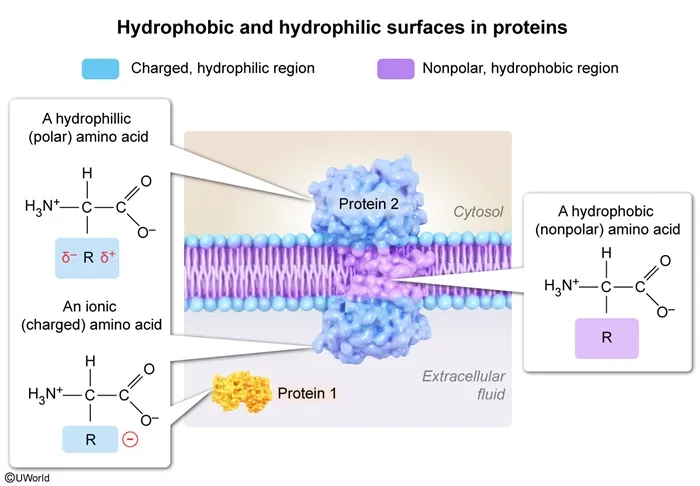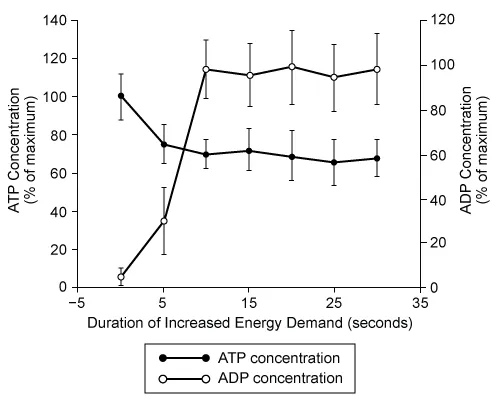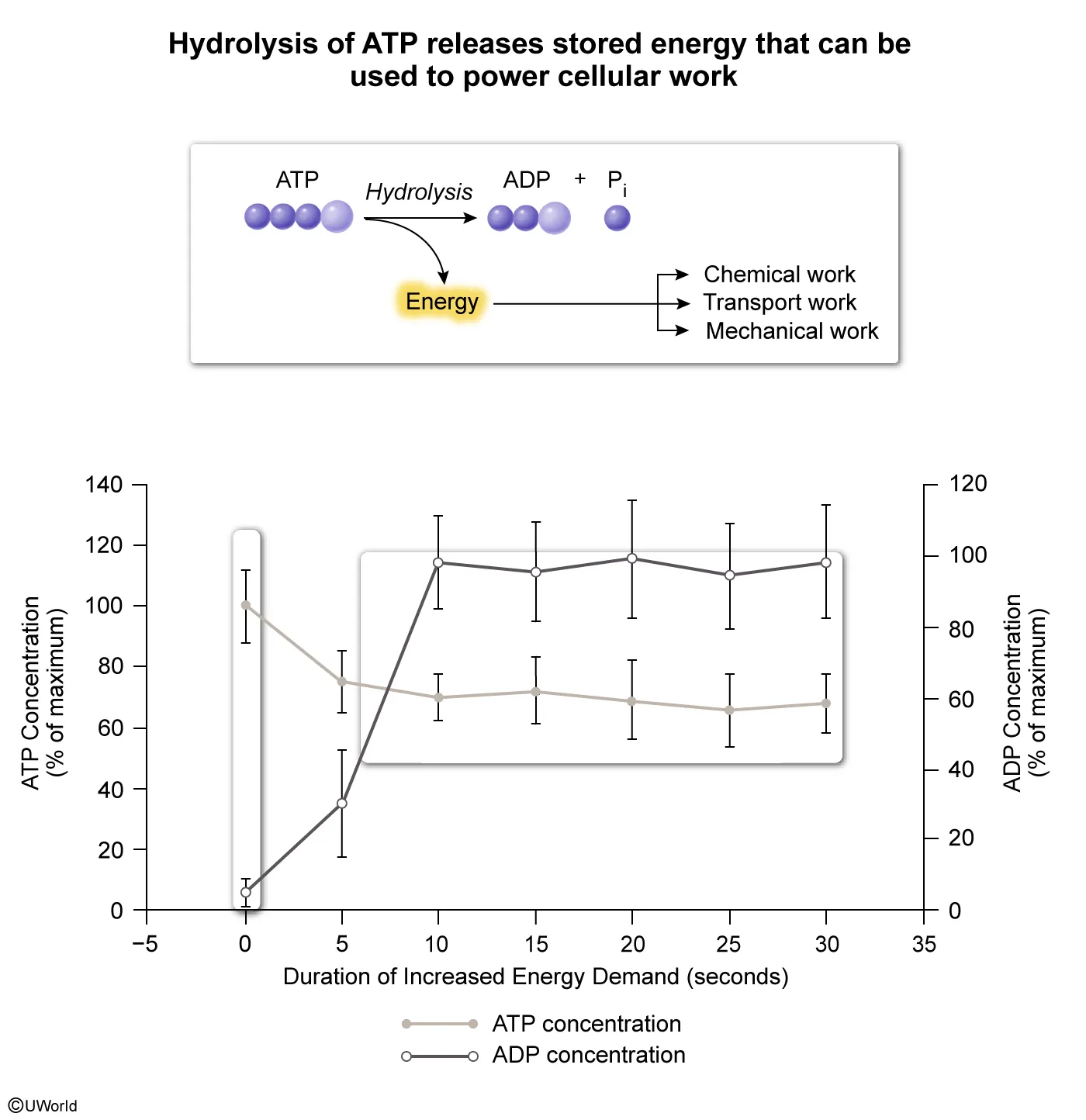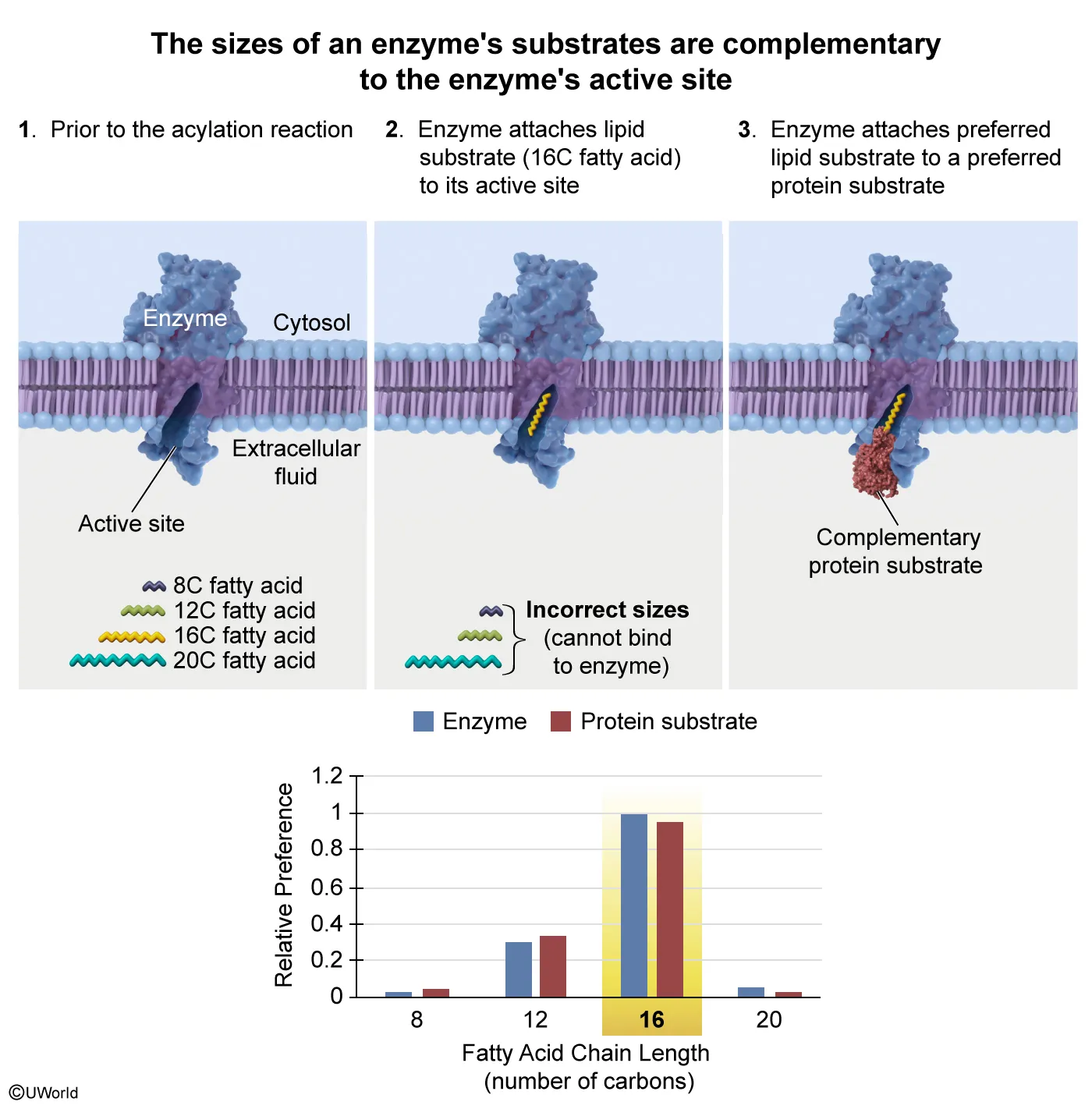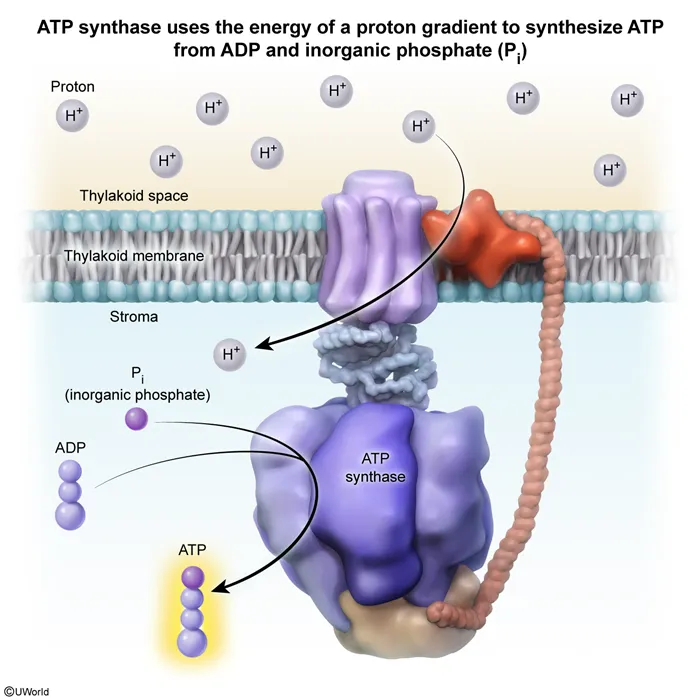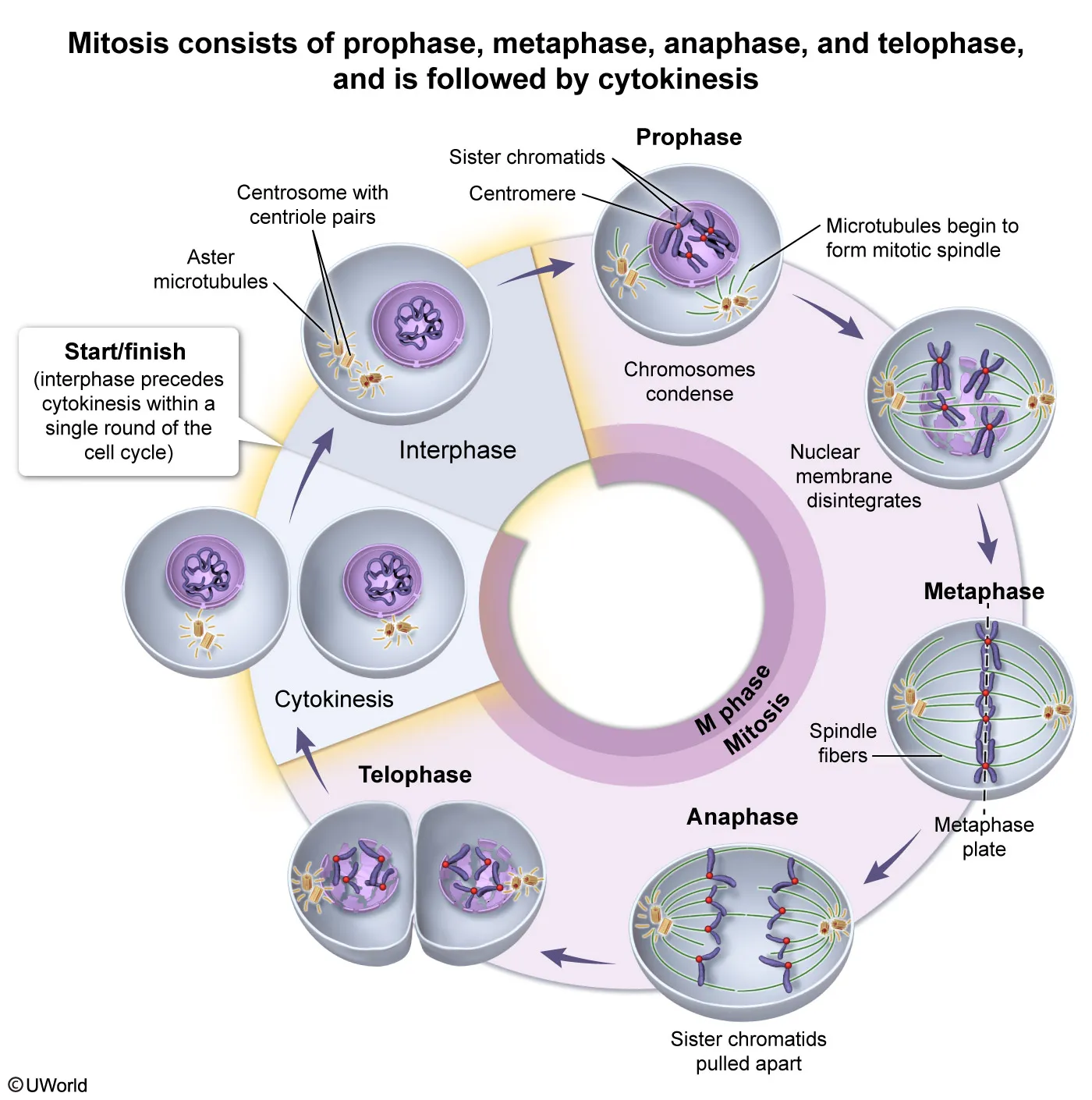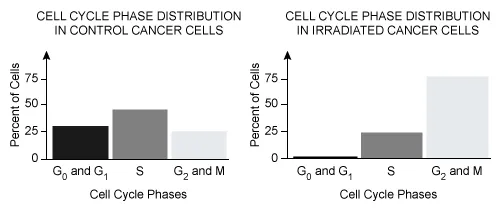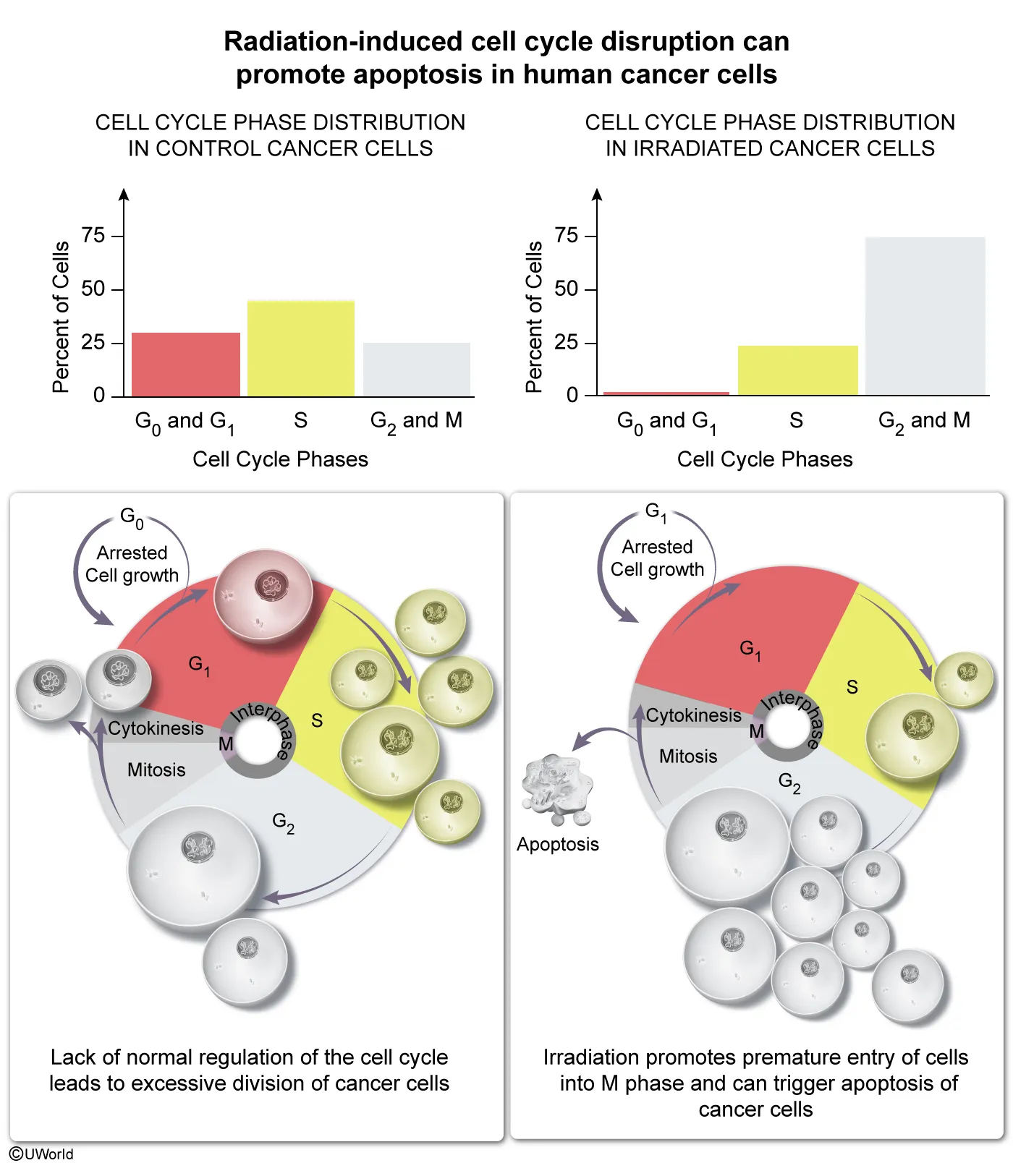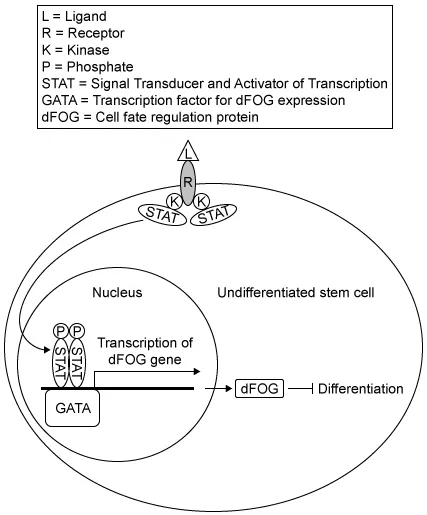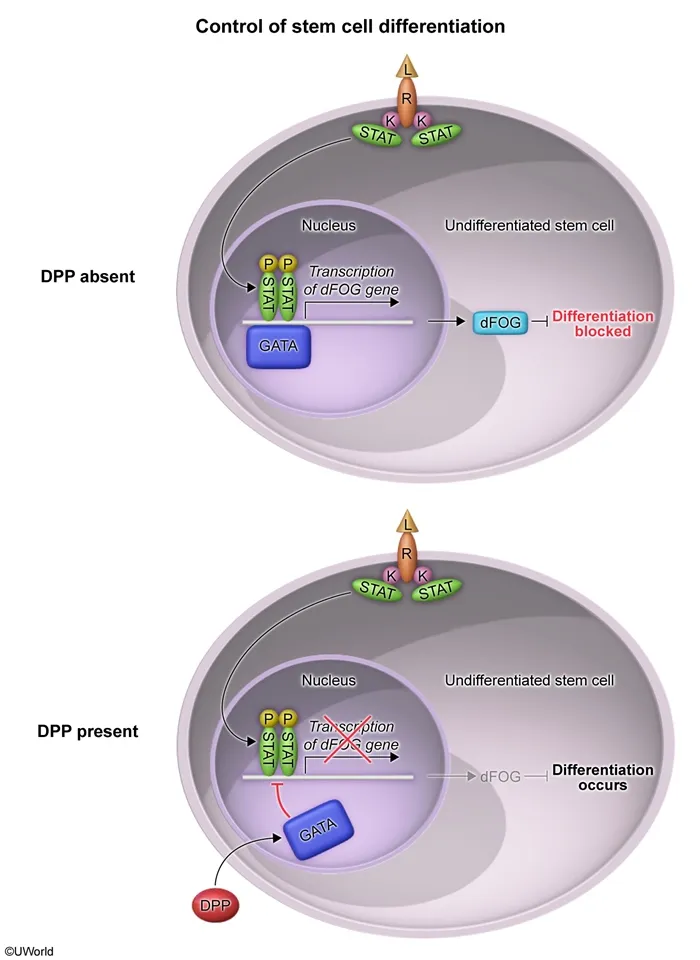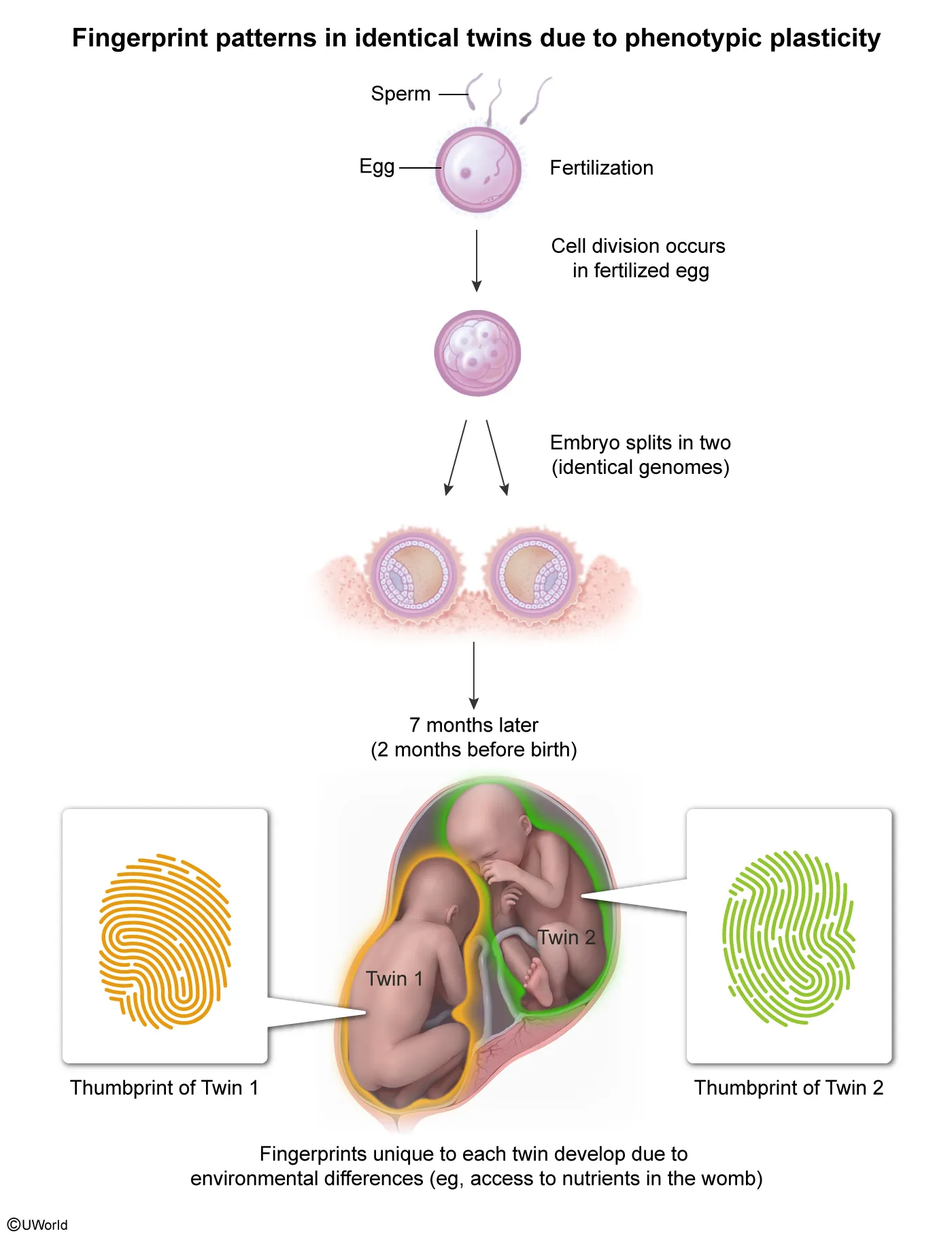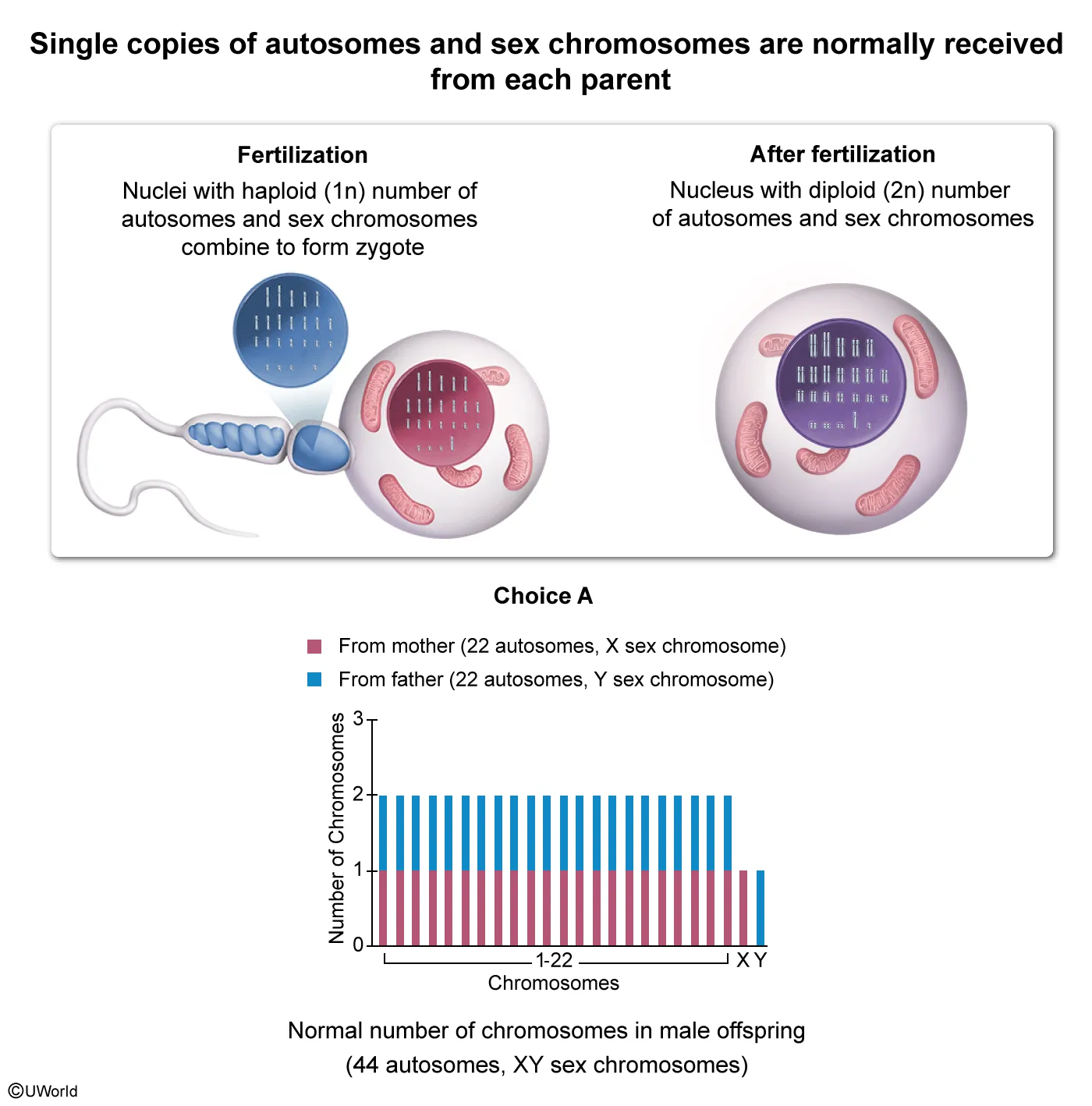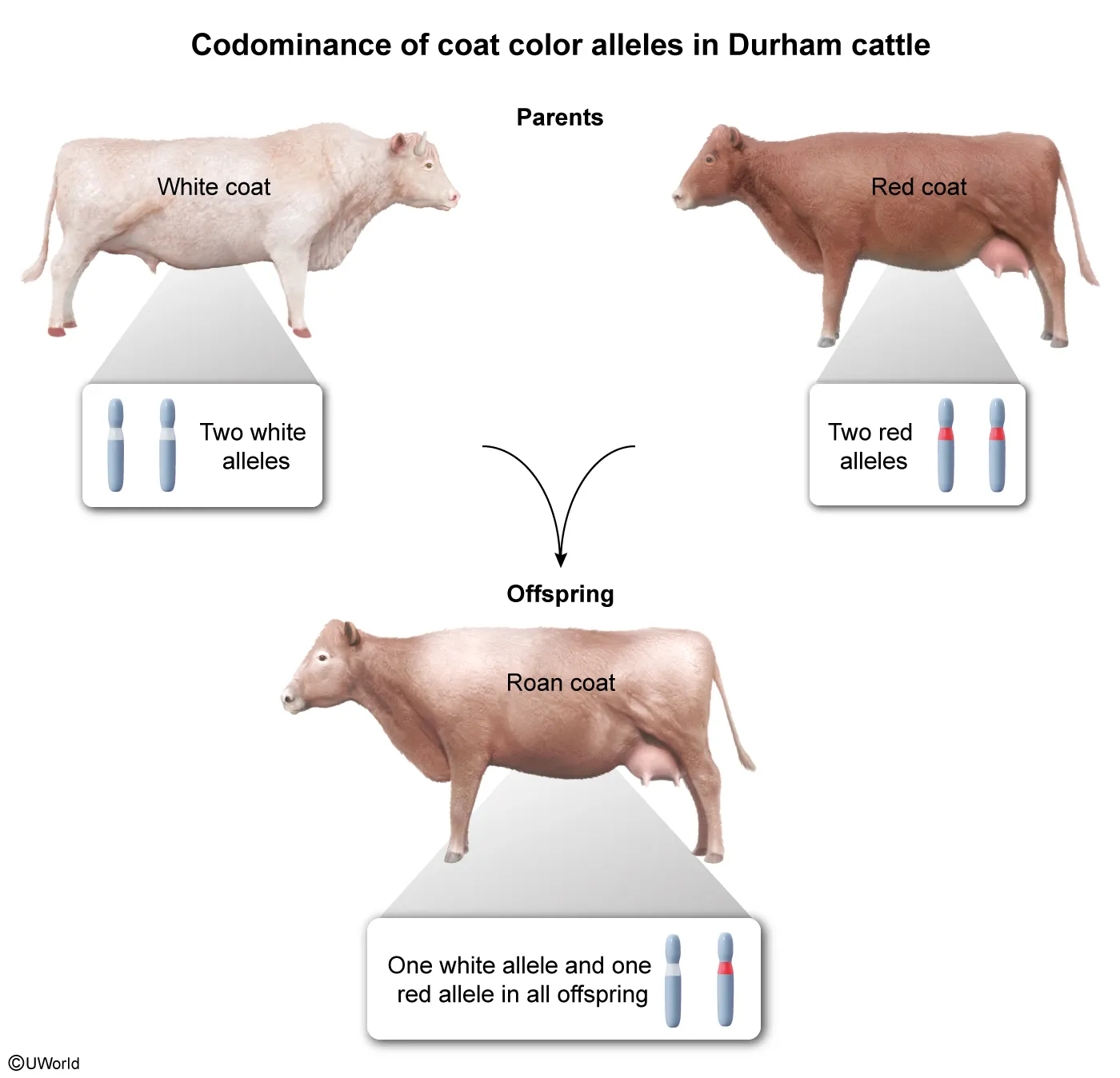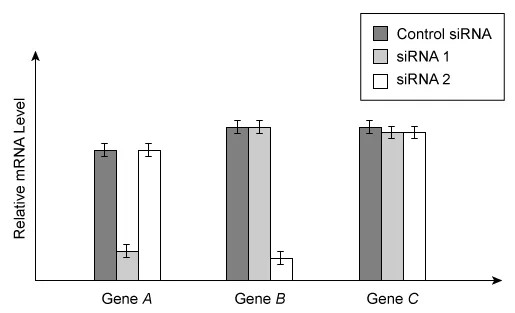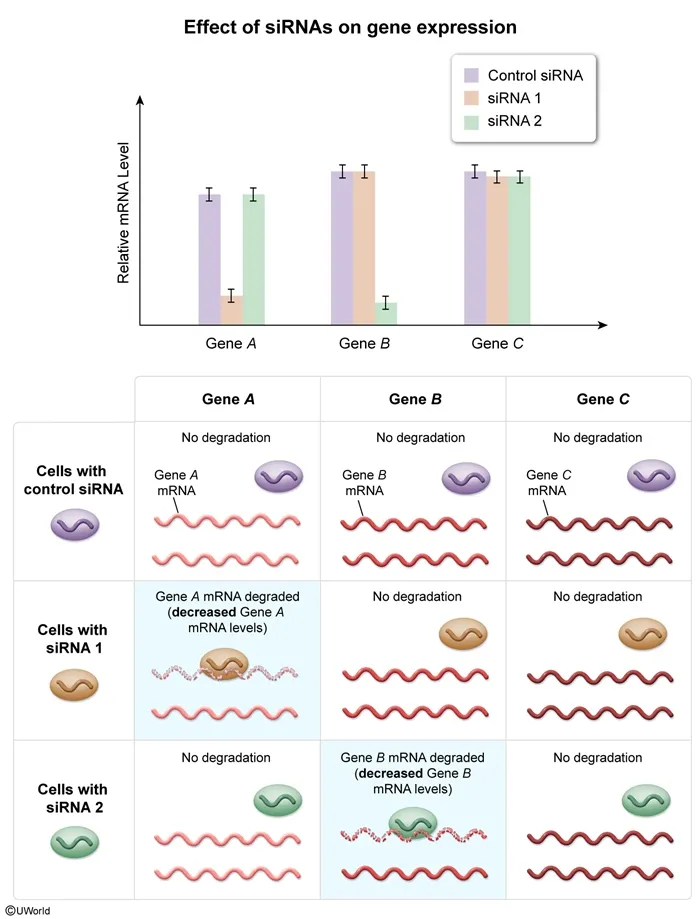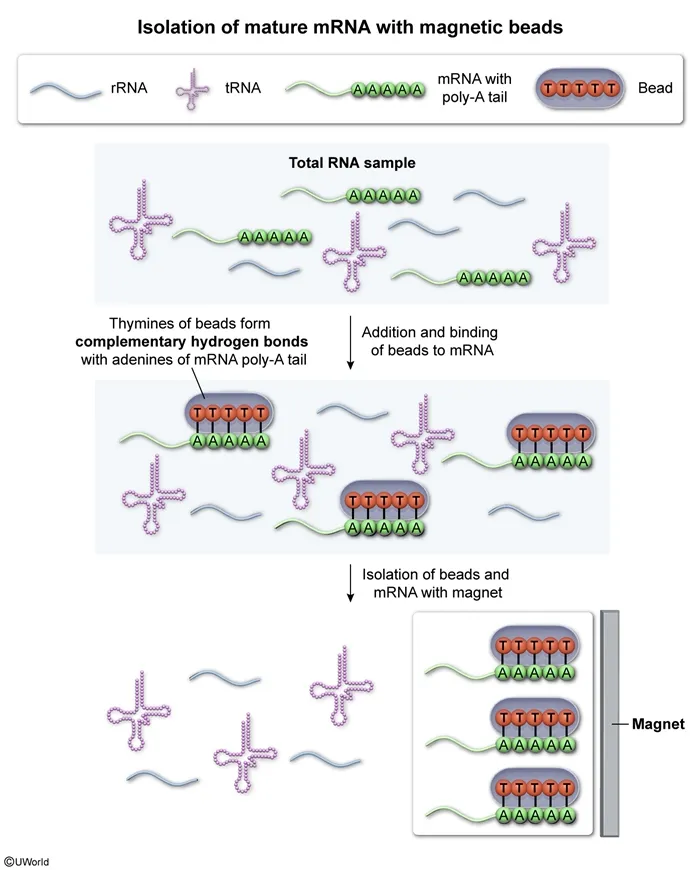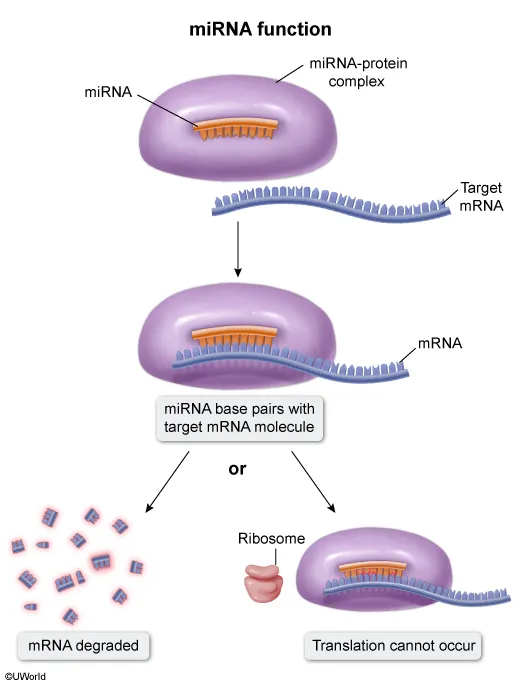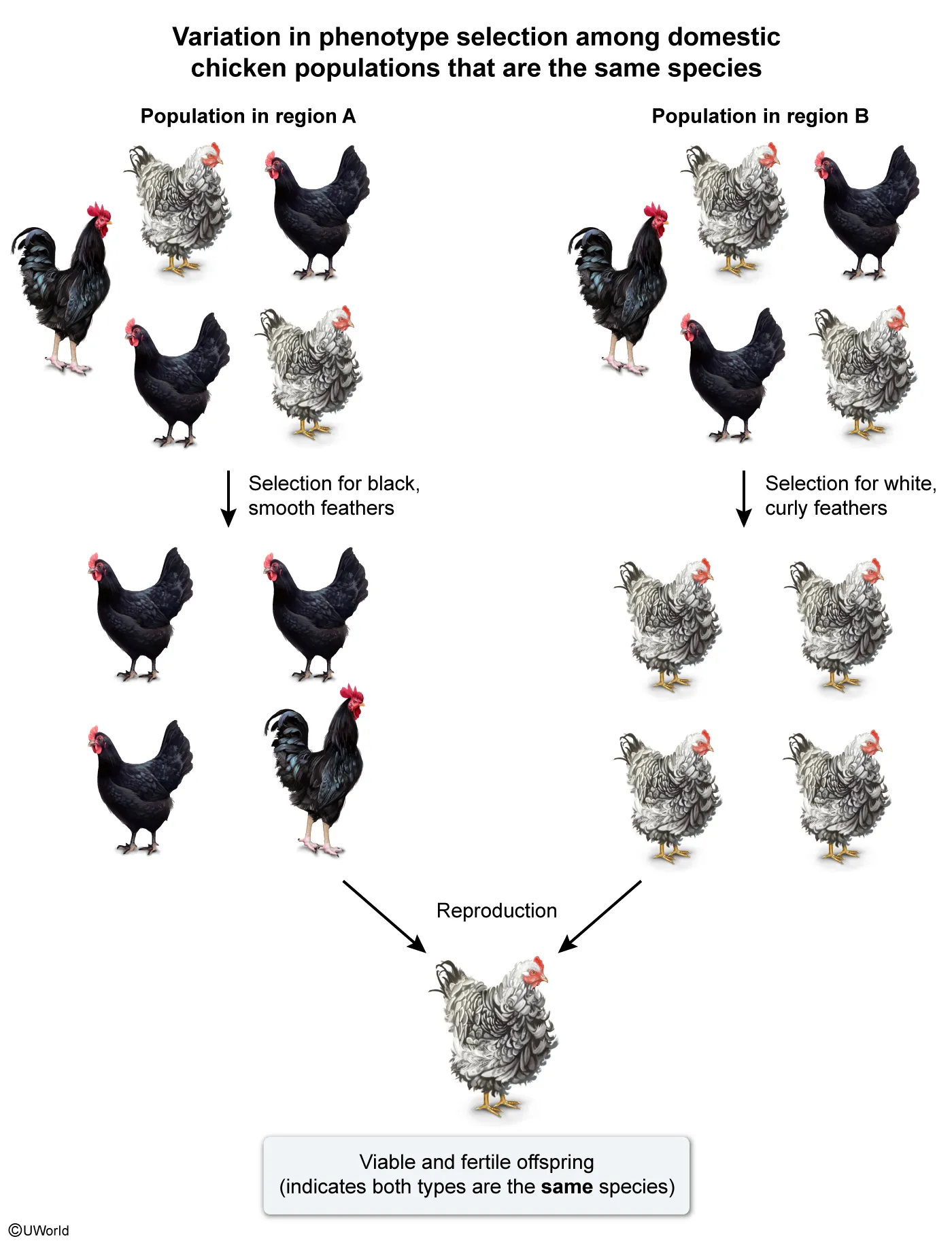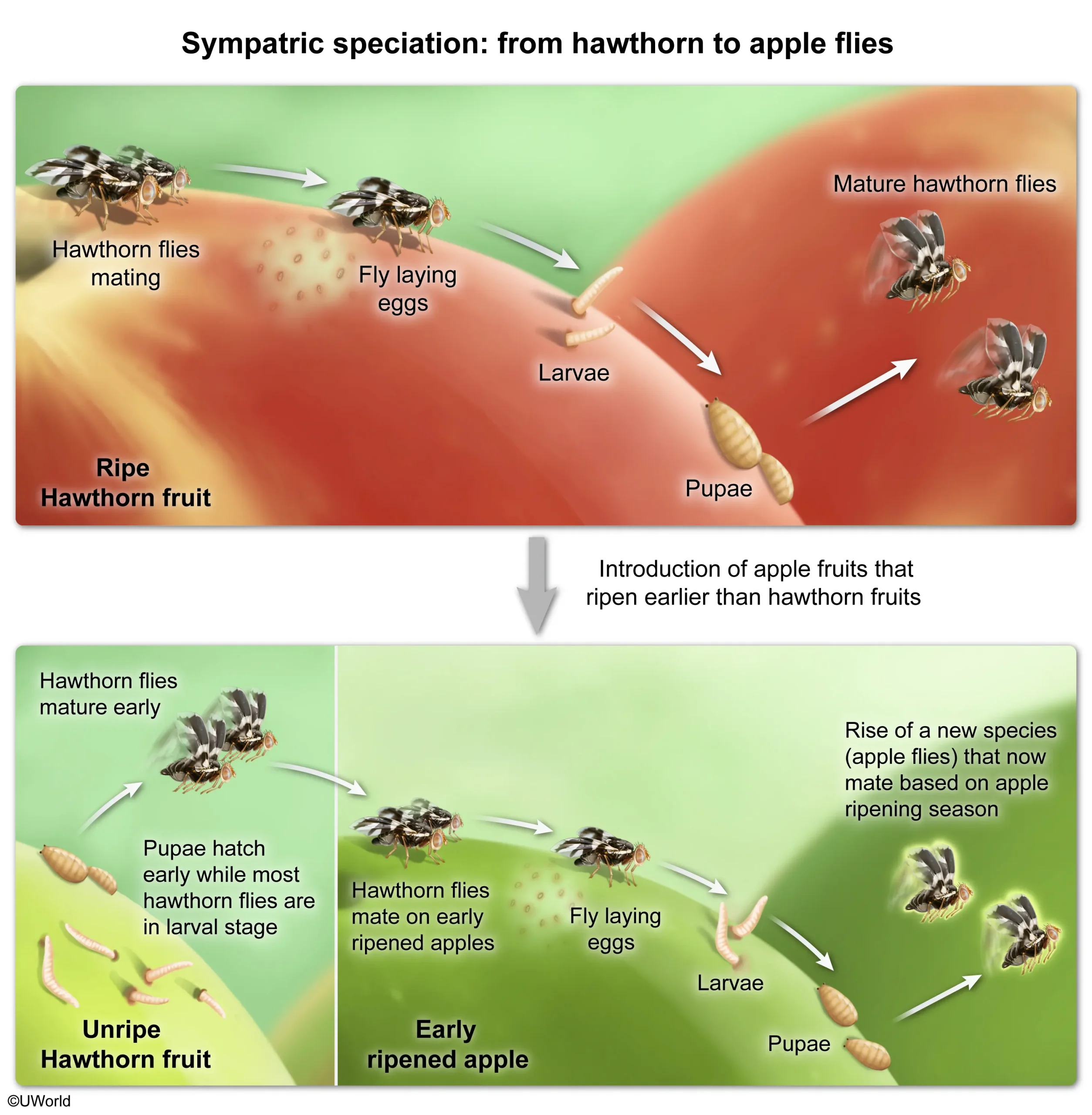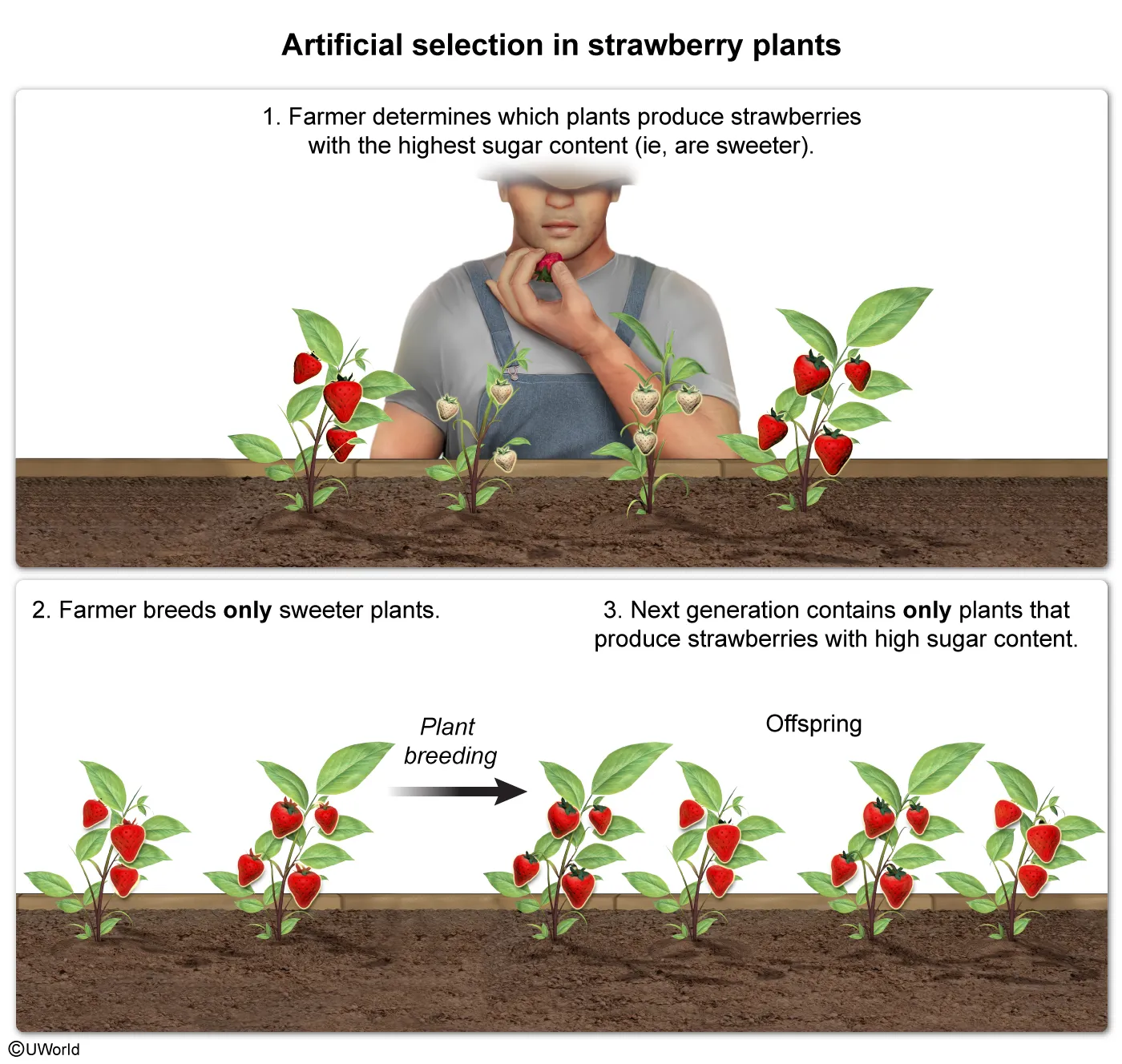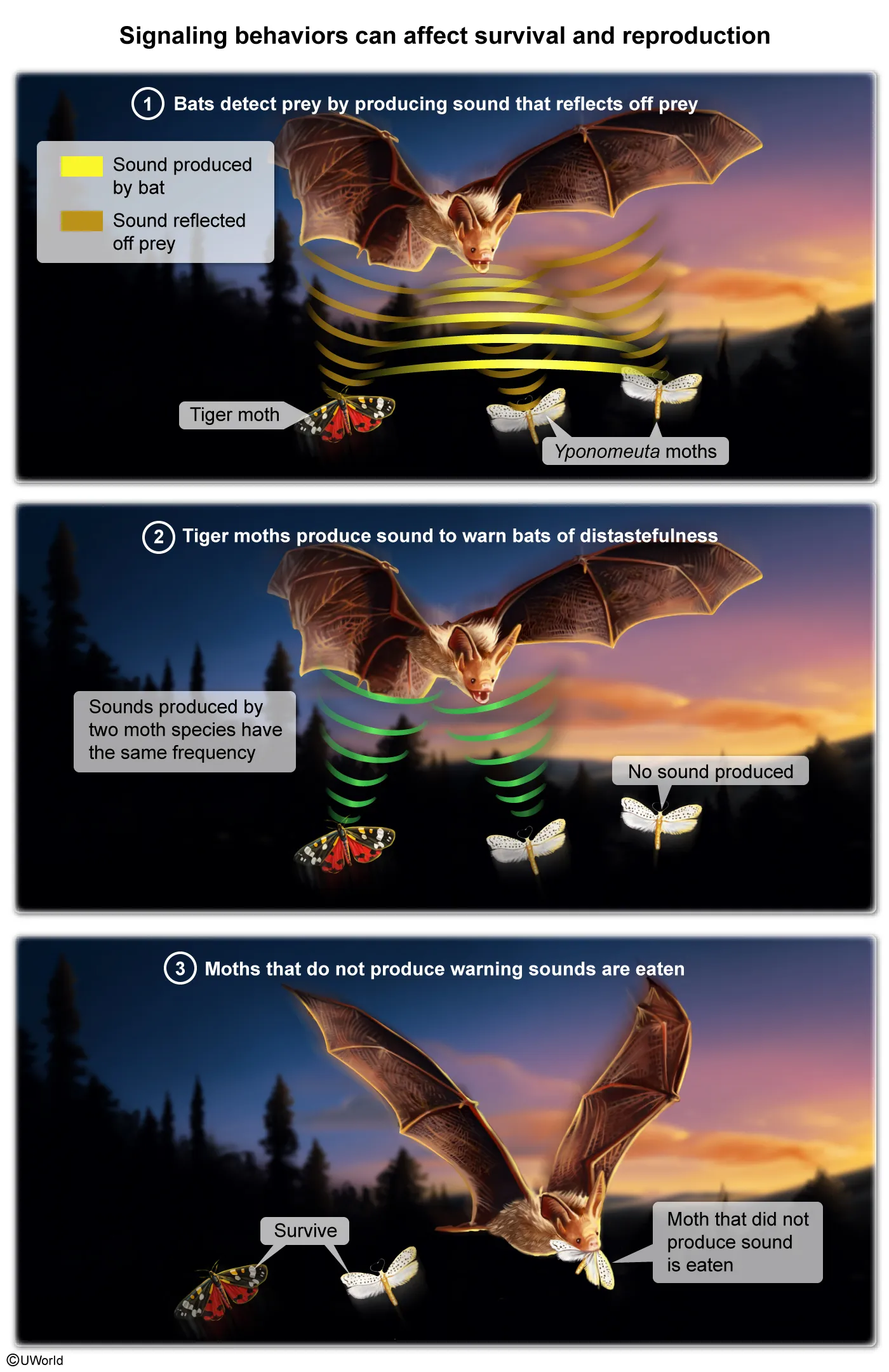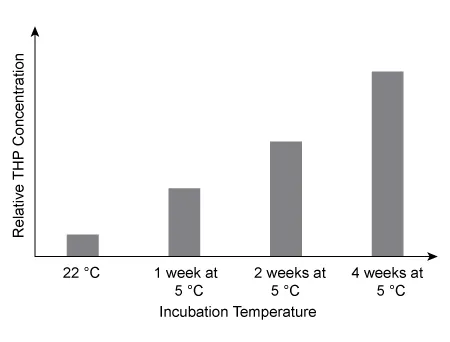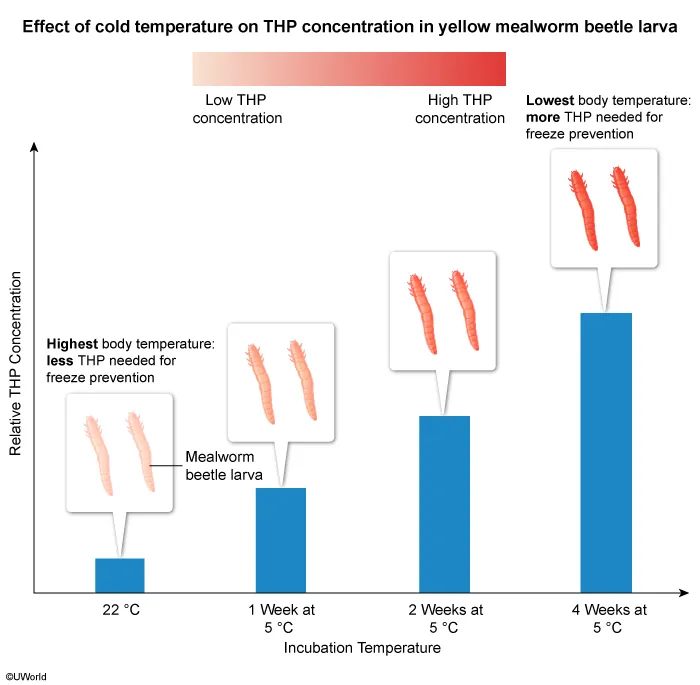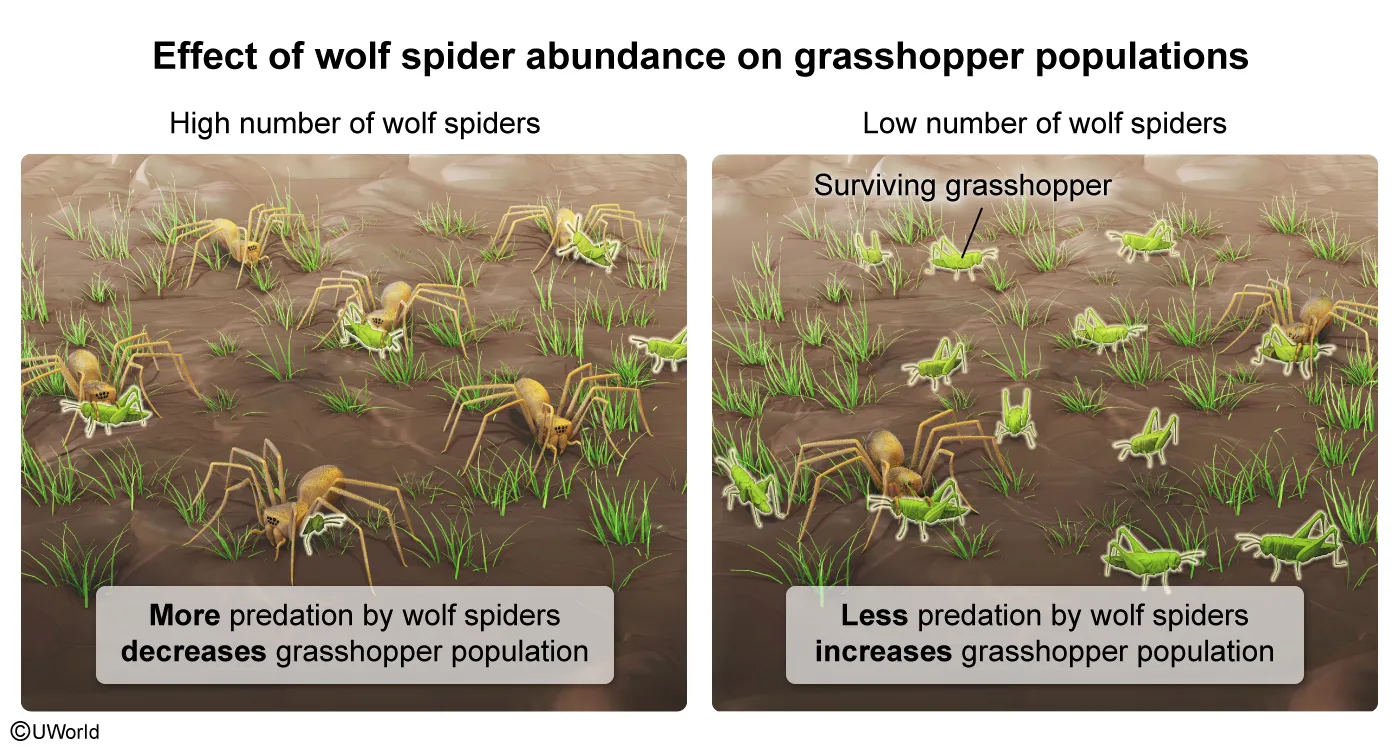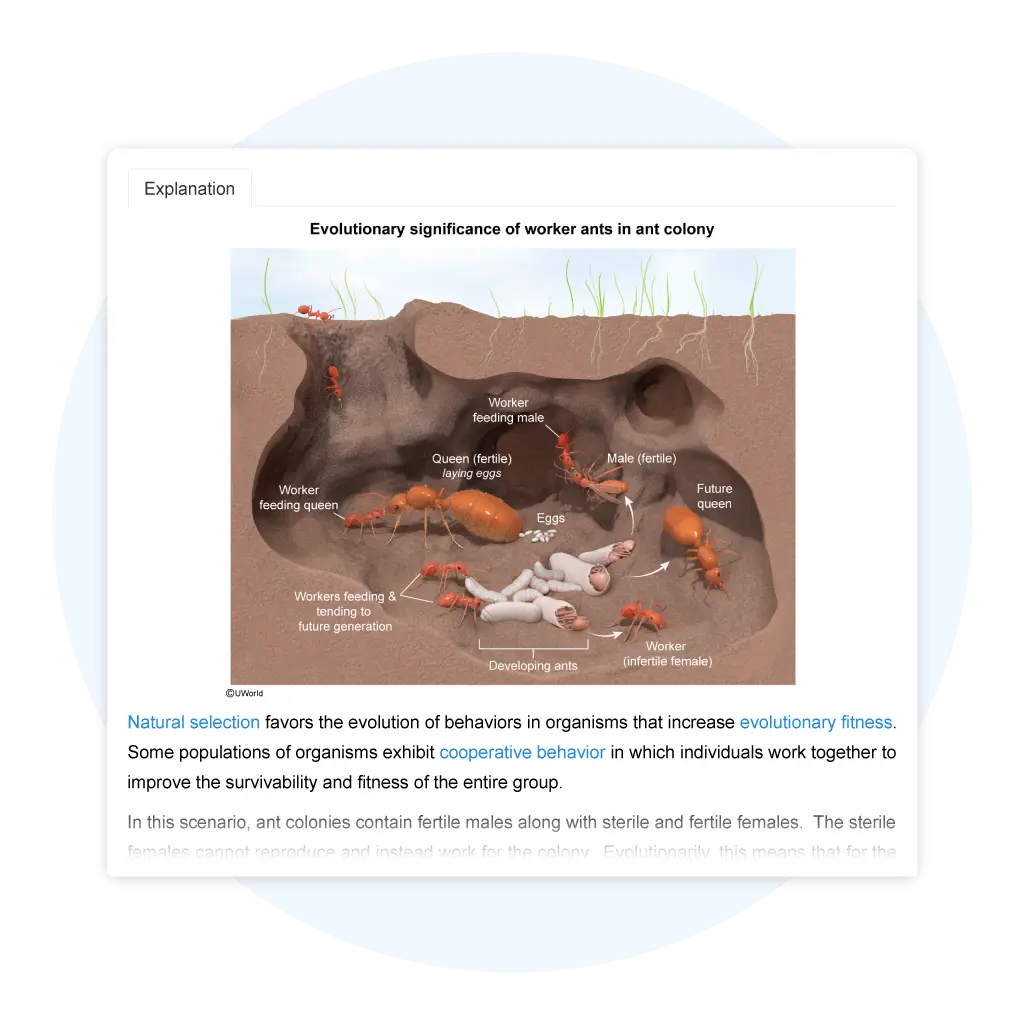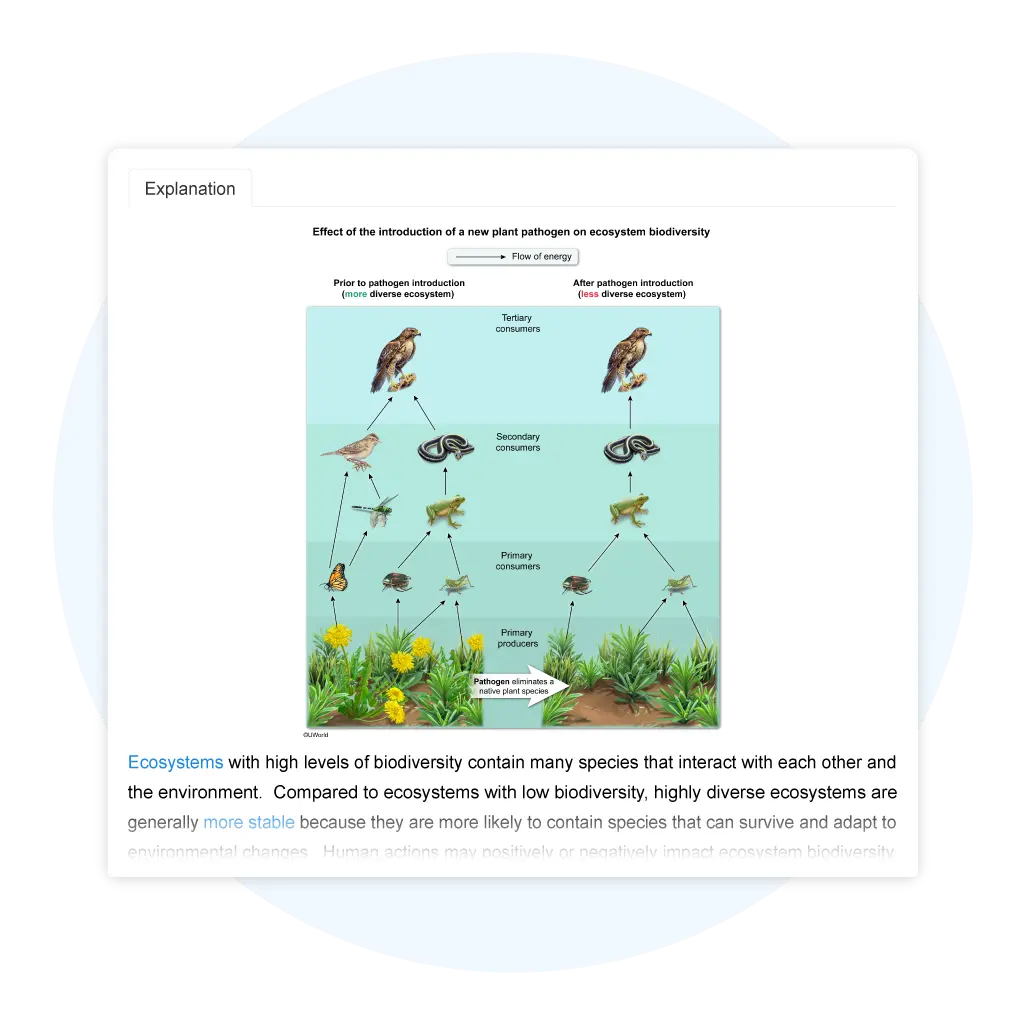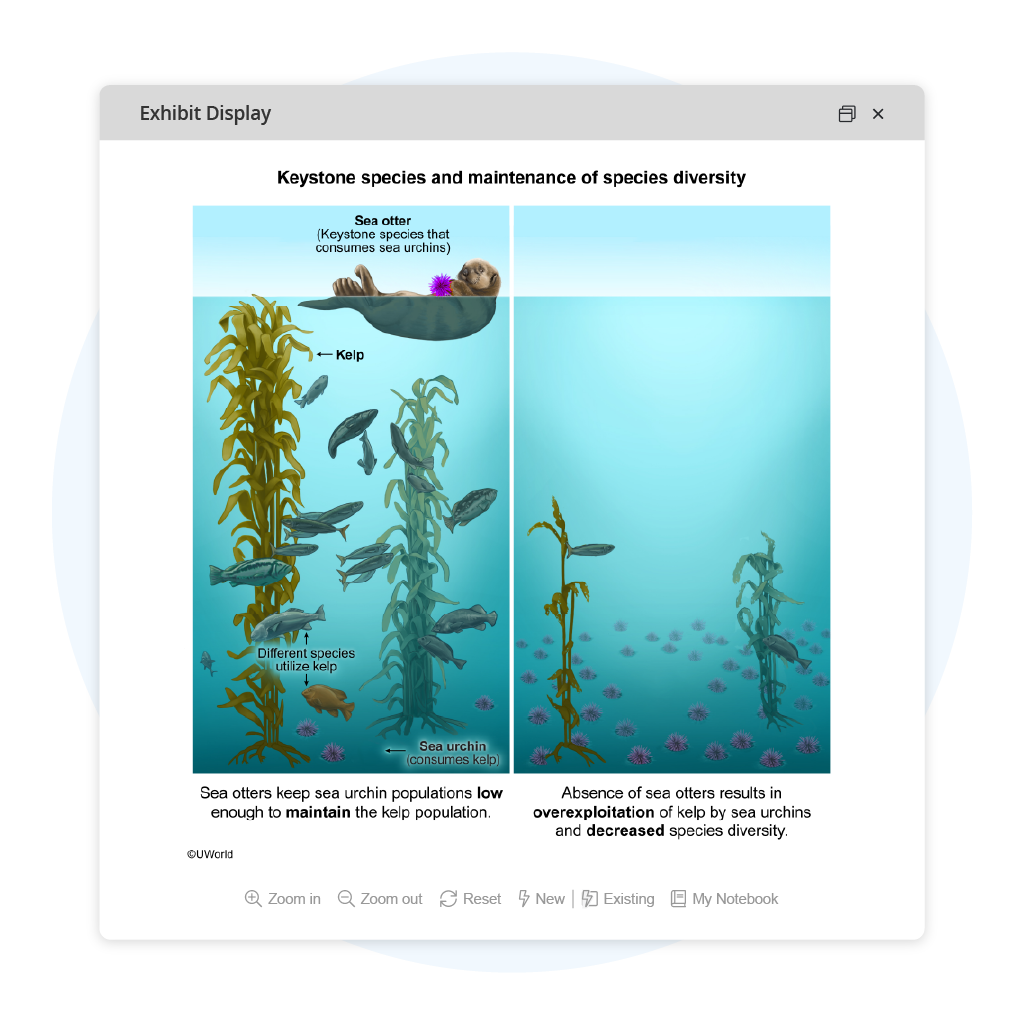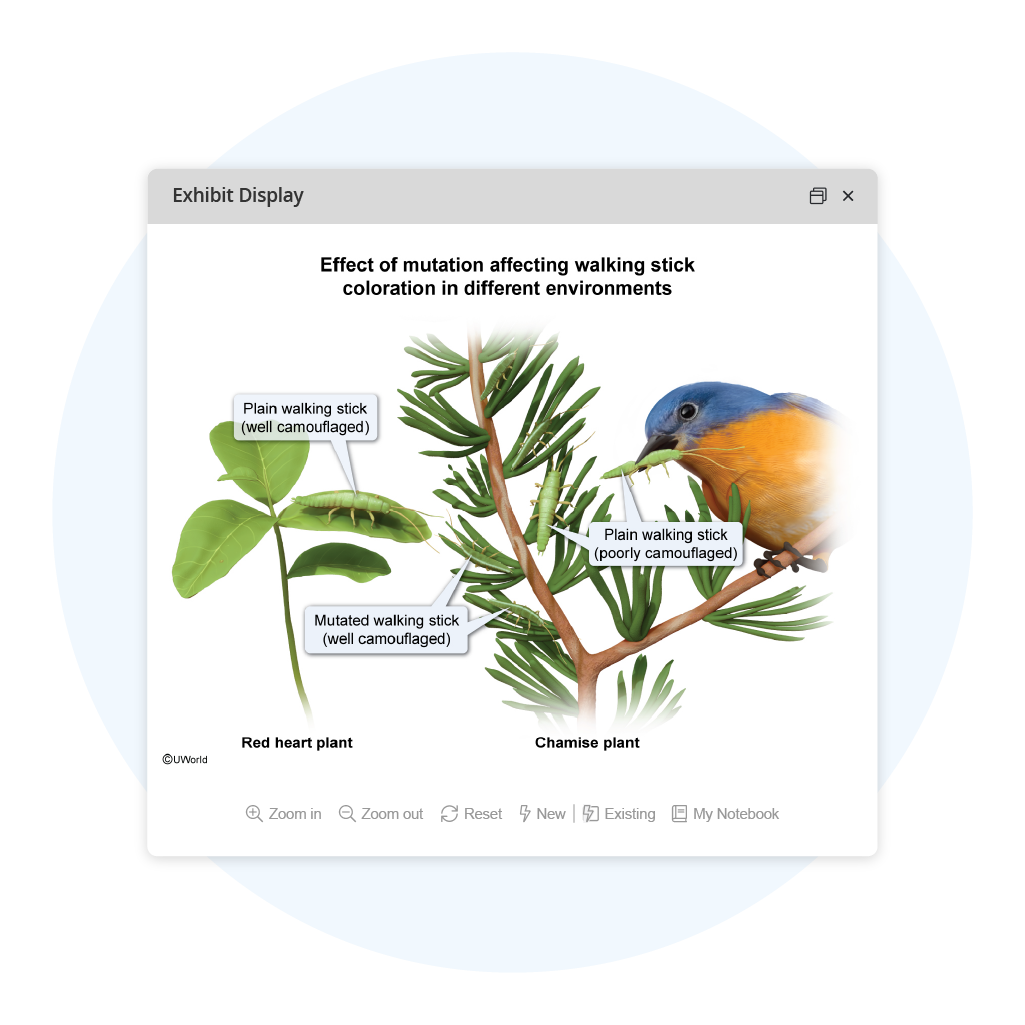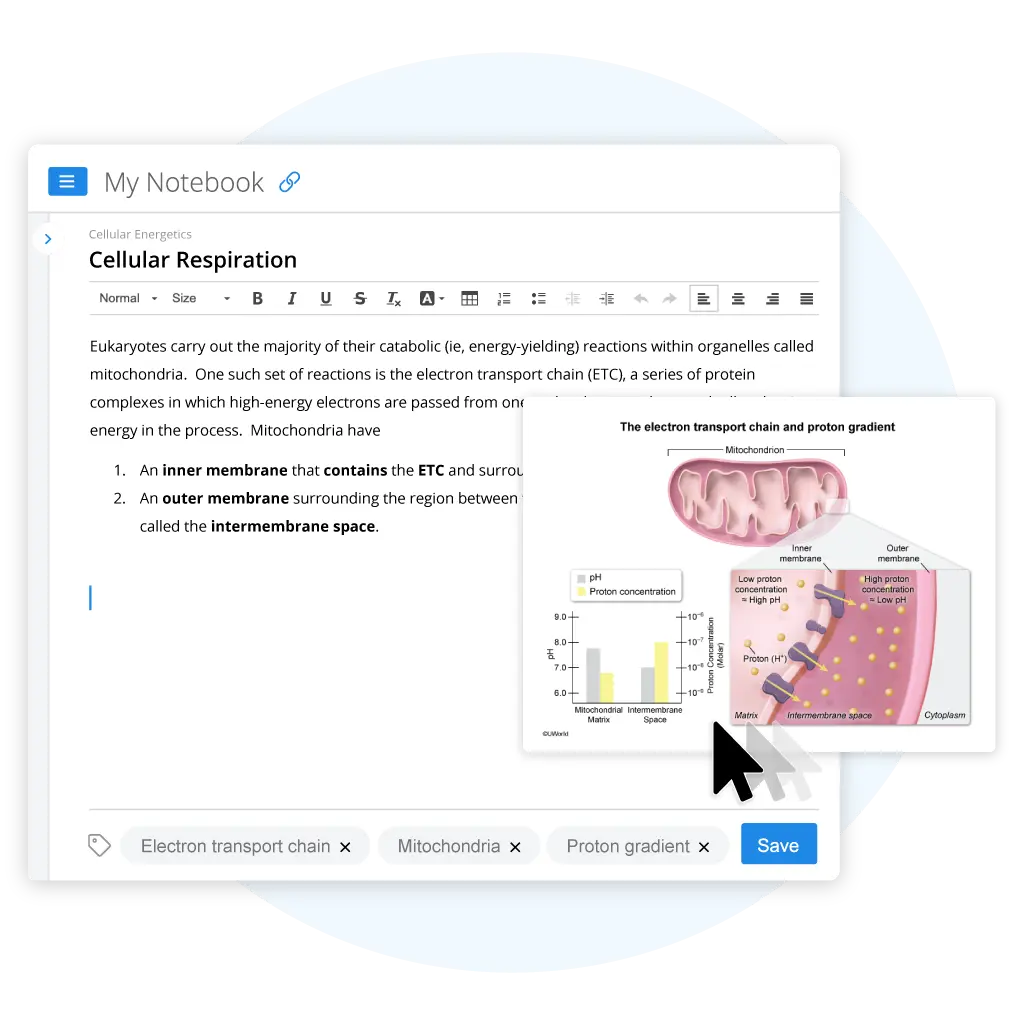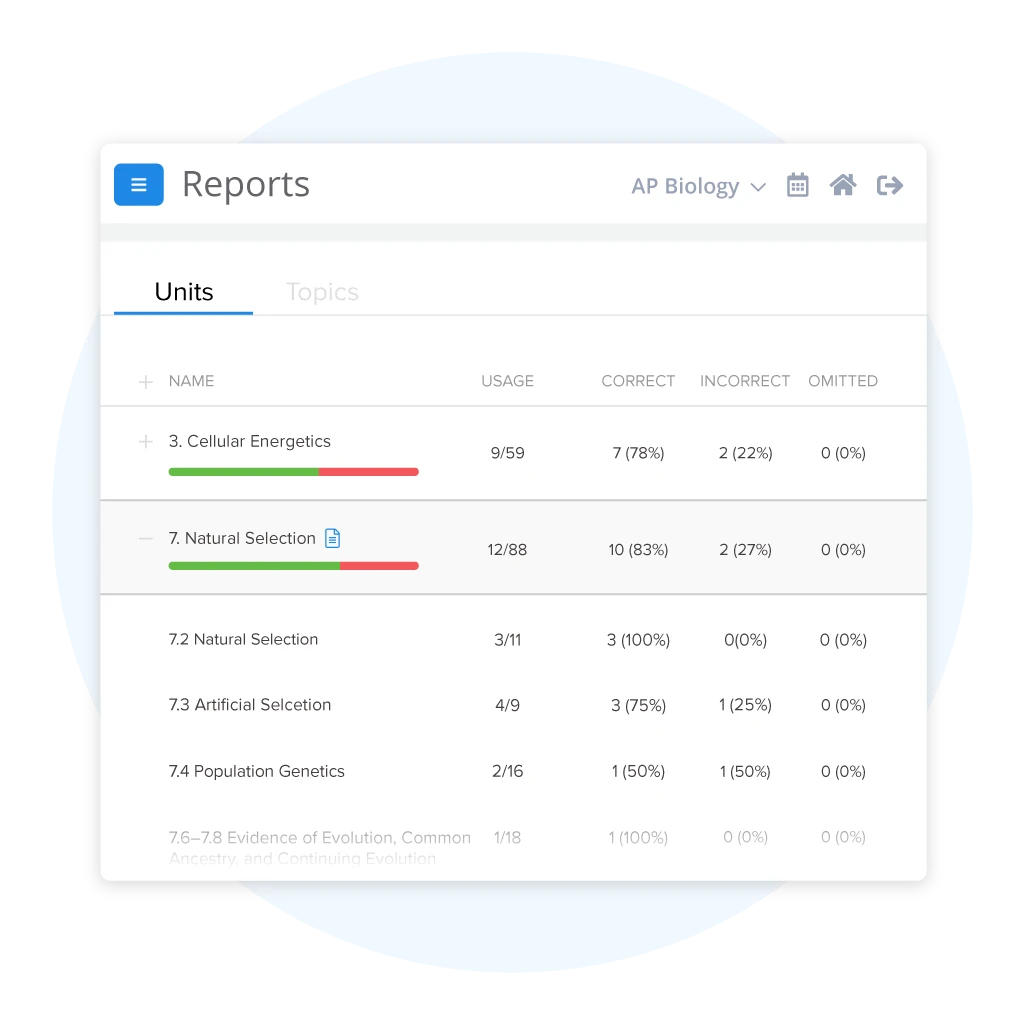AP® Biology Practice Tests & Questions
Ace the AP® Biology exam with 500+ MCQ practice questions and realistic FRQs (free-response questions)* written by experienced AP Biology educators. Build unlimited quick quizzes and targeted practice tests on any topic, or create up to 8 full-length 60-question AP Biology practice exams. Unlike basic answer keys that leave you guessing, get clear step-by-step explanations, helpful visuals, and progress tracking that shows exactly where you need work. Study efficiently and score higher.
Try These AP Biology Practice Test Questions
Chemistry of Life Practice Test
Question
Scientists investigated how water temperature at various depths changed throughout the year in a certain lake. The graph above depicts the relationship between water depth and water temperature recorded during the summer, when environmental temperatures were greater than 4°C, and during the winter, when the environmental temperatures were below the freezing point of water (0°C). Which of the following statements is most consistent with the data shown above?
| A. The water temperature increases with increasing water depth during the summer. | |
| B. Water depth and water temperature are directly correlated throughout the year. | |
| C. There is no relationship between water depth and water temperature. | |
| D. Water temperature increases with increasing water depth during the winter. |
Explanation
Water molecules consist of one oxygen atom covalently bonded to two hydrogen atoms. The electronegative oxygen pulls harder on the shared electrons than hydrogen, resulting in polar bonds. The increased electron density around the oxygen atom gives it a partial negative charge, and the decreased electron density around each hydrogen atom gives it a partial positive charge.
The attraction between these partial positive and negative charges allows the formation of hydrogen bonds between oxygen and hydrogen atoms of different water molecules.
When environmental temperatures are above approximately 4°C (ie, temperature at which water is most dense), the water temperature in a lake decreases with increasing depth, as depicted in the question graph. This occurs because, at these temperatures, warmer water is less dense than cooler water.
When environmental temperatures reach the freezing point of water, more hydrogen bonds form, causing water molecules to adopt a rigid framework in which water molecules are further from each other than they are in liquid water. As a result, ice is less dense than liquid water. Therefore, when environmental temperatures are at or below the freezing point of water, water temperature in a lake increases with depth (Choice D).
(Choice A) The water temperature decreases with increasing water depth during the summer.
(Choices B and C) There is a relationship between water depth and temperature, but the relationship depends on whether environmental temperatures are above or below freezing.
Things to remember:
Hydrogen bonding between oxygen and hydrogen atoms of adjacent water molecules causes water to become less dense as it freezes.
Question
During RNA synthesis in a cell, a cytosine nucleotide is added to a growing RNA strand ending in a guanine-adenine dinucleotide. Which of the following correctly illustrates the structure and orientation of each nucleotide as the reaction takes place?
A.  |
|
B.  |
|
C.  |
|
D.  |
Explanation
Nucleotides are biological molecules composed of the following:
- One pentose sugar (ie, ribose in RNA or deoxyribose in DNA)
- One to three phosphates
- One of the five nitrogenous bases: adenine, cytosine, guanine, thymine (DNA only), or uracil (RNA only)
The nitrogenous base is attached to carbon 1 of the sugar, all phosphates present are attached to carbon 5 (ie, the 5′ end), and a hydroxyl group (OH) is attached to carbon 3 (ie, the 3′ end).
Nucleotides can combine to form long chains (ie, polymers) known as polynucleotides or nucleic acids (ie, RNA or DNA). In biological systems, this occurs when the 5′ triphosphate (three connected phosphates) on a free nucleotide reacts with the 3′ hydroxyl group of the growing nucleic acid.
In the given RNA synthesis reaction, cytosine (a free nucleotide) is added to a guanine-adenine dinucleotide on the growing nucleic acid. Because cytosine is the free nucleotide in this scenario, it must contain a 5′ triphosphate, which must align with the 3′ hydroxyl group of guanine-adenine for the addition to occur. The diagram shown in Choice C correctly depicts this structure and orientation.
The diagrams shown in Choice A, Choice B, and Choice D show incorrect structures and/or orientations for the nucleotides.
Things to remember:
Nucleotides consist of a pentose sugar linked to a nitrogenous base (ie, adenine, cytosine, guanine, thymine [DNA only], uracil [RNA only]) at carbon 1, one or more phosphates linked to the 5′ end, and a hydroxyl group linked to the 3′ end. Nucleic acids grow when the 5′ triphosphate of a free nucleotide reacts with the 3′ hydroxyl group of the growing nucleic acid chain.
Question
Solid fatty acid samples were slowly heated in special warming pans until the samples melted. The scientists performing the procedure recorded the melting temperatures, noting that they were dependent on chain length and other characteristics of the lipids. Which plot below best represents the likely study results?
A. 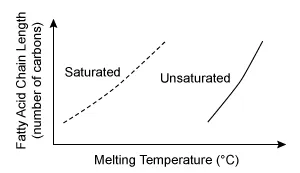 |
|
B.  |
|
C.  |
|
D.  |
Explanation
Lipids are nonpolar biological molecules with many functions (eg, storing energy, providing structure to cell membranes). Lipids may be saturated or unsaturated based on the types of fatty acids that they possess. These fatty acids are composed of carbon-hydrogen (hydrocarbon) chains. In saturated lipids, fatty acids contain carbon atoms linked only by single bonds, making them essentially straight in structure. In contrast, fatty acids of unsaturated lipids have some double bonds between their carbon atoms that cause structural kinks (ie, bends).
The straighter fatty acid chains of saturated lipids can be packed more tightly, whereas bends in unsaturated lipids prevent them from packing together tightly. Tighter packing increases interactions between fatty acid chains, thereby increasing melting temperature.
The question describes fatty acid melting temperatures measured by a team of scientists and states that these melting temperatures were affected by the chain length of the fatty acids. Since melting temperature is the dependent variable, it should be plotted on the y-axis. Therefore, the plot in Choice D, which shows melting temperature being affected by both chain length and fatty acid saturation, best represents the likely results.
The other graphs either are plotted with incorrect orientation (Choices A and B) or incorrectly depict some fatty acids as polar (Choices B and C).
Things to remember:
Lipids are nonpolar biological molecules. The fatty acids in lipids can be saturated (contain only single bonds between carbon atoms) or unsaturated (contain some double bonds between carbon atoms). Dependent variables are plotted on the y-axis of a line graph.
Cell Structure & Function Practice Test
Question
Cellular organelles are centrifuged in a test tube filled with a liquid that becomes denser with increasing depth. Different organelles come to rest at depths that match their density, as shown in the figure below. Each organelle remains functional during and after centrifugation.
The purpose of the experiment is to determine which enzymes are found in each organelle by measuring enzyme activities at different densities. Given that steroid 8-isomerase is an enzyme involved in cholesterol synthesis, which of the following best represents the amount of steroid 8-isomerase activity as a function of density in the test tube?
A.
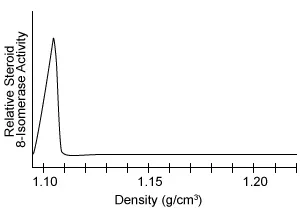
|
|
B.
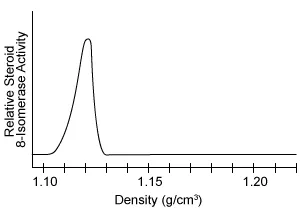
|
|
C.
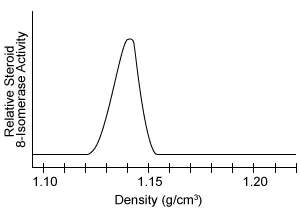
|
|
D.
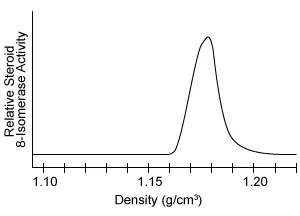
|
Explanation
Eukaryotic cells contain several membrane-bound compartments called organelles, each of which is specialized to carry out specific functions. For example, the nucleus carries out DNA and RNA synthesis, lysosomes degrade large biomolecules, and mitochondria are responsible for many metabolic reactions.
The endoplasmic reticulum (ER) is a network of membrane-bound compartments that help facilitate multiple cellular processes including protein and lipid synthesis. The ER is broadly divided into two components: the rough ER and the smooth ER. Most lipids, including cholesterol, are synthesized in the smooth endoplasmic reticulum (SER). Therefore, the enzymes responsible for cholesterol synthesis are most likely found in the SER.
The question states that steroid 8-isomerase is involved in cholesterol synthesis, indicating that it is most likely found in the SER. The figure shows that after centrifugation, the endoplasmic reticulum (including the SER) is found at a density of approximately 1.14 g/cm3. Therefore, the correct graph should show high steroid 8-isomerase activity at 1.14 g/cm3 and low activity elsewhere (Choice C).
(Choices A, B, and D) These graphs show steroid 8-isomerase activity in the nucleus, lysosomes, and mitochondria, respectively. These organelles are not involved in cholesterol synthesis, so steroid 8-isomerase is unlikely to be found at the densities that correspond to these organelles.
Things to remember:
Lipid synthesis occurs primarily in the smooth endoplasmic reticulum, where the enzymes that catalyze the necessary reactions are found.
Question
As part of a scientific investigation, the permeability of various molecules was measured in artificial cellular membranes lacking membrane proteins. The table above presents the number of molecules diffusing across 1 μm2 of artificial membrane per second. For molecules that normally use transport proteins to cross cellular membranes, the diffusion rate across the artificial membrane ranges from
| A. 3.50 × 108 to 2.27 × 1010 zeptomoles per second. | |
| B. 1.00 × 102 to 3.50 × 108 zeptomoles per second. | |
| C. 1.00 × 10−5 to 1.00 × 102 zeptomoles per second. | |
| D. 1.00 × 10−5 to 1.00 × 10-1 zeptomoles per second. |
Explanation
Cells must transport ions and molecules across their membranes to maintain homeostasis and carry out essential functions. Cell membranes are selectively permeable, meaning that some solutes cross membranes easily whereas others do not. For ions (charged) and polar molecules, the hydrophobic interior of the lipid bilayer represents a barrier that largely prevents their passage across a membrane.
Therefore, a membrane protein (eg, a channel or transport protein) is required to enable sufficient passage of polar or charged solutes across the membrane down its concentration gradient. This form of passive transport is called facilitated diffusion.
The question asks for the range of diffusion rates for molecules that typically cross cellular membranes through transport proteins. Glucose, Na+, and Cl− are polar or charged, and each crosses the membrane slowly in the absence of transport proteins. The range of diffusion rates for these molecules spans the smallest value of the three to the largest value and is determined by subtracting the smallest from the largest: 1.00 × 10−5 to 1.00 × 102 zeptomoles per second.
(Choices A and B) These ranges include the observed rates of CO2 diffusion and, in Choice A, O2 diffusion. These small nonpolar molecules do not normally use transport proteins to cross the cell membrane.
(Choice D) 1.00 × 10−5 to 1.00 × 10-1 zeptomoles per second correctly identifies the observed range of diffusion rates for Na+ and Cl−, but incorrectly excludes the rate of glucose diffusion.
Things to remember:
Facilitated diffusion is the passive transport of a solute across a membrane through a membrane protein.
Question
Two proteins are synthesized inside of a eukaryotic cell. Protein I primarily has amino acids with polar or charged side chains on its surface. Protein II has some surfaces consisting of amino acids with primarily polar or charged side chains and other surfaces with primarily nonpolar side chains.
Which of the following is most consistent with the descriptions of the two proteins?
| Protein I | Protein II |
| A. | Soluble protein with primarily hydrophobic side chains on its surface | Soluble protein with primarily hydrophilic side chains on its surface | |
| B. | Soluble protein with primarily hydrophilic side chains on its surface | Embedded protein with both hydrophobic and hydrophilic side chains on its surface | |
| C. | Embedded protein with both hydrophobic and hydrophilic side chains on its surface | Soluble protein with primarily hydrophobic side chains on its surface | |
| D. | Embedded protein with primarily hydrophilic side chains on its surface | Embedded protein with primarily hydrophilic side chains on its surface |
Explanation
Proteins consist of multiple amino acids linked together by peptide bonds. In addition to the amino and carboxyl groups that participate in peptide bonding, amino acids also contain unique side groups. These side chains can be classified by their charge, polarity, and affinity for water.
The lipid bilayers of cellular membranes contain phospholipids with polar head groups and nonpolar fatty acid tails, giving membranes a specific orientation. The hydrophilic phospholipid head groups face aqueous environments, and the hydrophobic tails interact with each other in the hydrophobic bilayer interior.
Some proteins are embedded into cellular membranes (eg, the plasma membrane or the membranes enclosing eukaryotic organelles). Since membranes have both hydrophilic and hydrophobic regions, the surfaces of embedded proteins must possess both hydrophilic and hydrophobic regions as well. The amino acid side chains interacting with the hydrophobic interior of the bilayer will be largely nonpolar, whereas the side groups interacting with aqueous environments will be largely polar or charged. In contrast, soluble proteins possess largely hydrophilic surface amino acid side chains.
(Choices A, C, and D) Soluble proteins have primarily hydrophilic amino acid side chains on their surfaces, whereas embedded proteins have some surface regions with hydrophilic amino acids and others with hydrophobic amino acids. Accordingly, the description of Protein I is more consistent with that of a soluble protein, and the description of Protein II is more consistent with that of an embedded protein.
Things to remember:
Embedded protein amino acids in the nonpolar interior of a membrane have hydrophobic side groups, whereas those found on the charged surface of the membrane are hydrophilic.
Cellular Energetics Practice Test
Question
Changes in ATP and ADP levels during a period of increased energy demand in a certain cell type are depicted in the graph above. Which mechanism below best predicts how the changes in ATP and ADP levels likely occur?
| A. An increasing ADP level causes a decrease in the ATP level, thereby maintaining high levels of both molecules in these cells. | |
| B. A low ADP level causes a reduction in ATP levels, which maintains low levels of both molecules in these cells. | |
| C. A period of increased energy demand stimulates ATP hydrolysis, which increases ADP levels and releases energy for metabolic processes. | |
| D. A period of increased energy demand stimulates ATP synthesis, which reduces ADP levels and releases energy for metabolic processes. |
Explanation
Adenosine triphosphate (ATP) consists of an adenine molecule with a series of three phosphate molecules attached to it. The bonds linking these phosphate groups represent a large store of potential energy that can be released to provide energy for essential cellular processes.
During cellular respiration and fermentation, cells harvest energy from organic molecules to synthesize ATP. To release this stored energy, ATP reacts with water in a process called hydrolysis. This process converts ATP to ADP and inorganic phosphate and also releases energy.
The graph in the question shows that ATP levels fall and ADP levels rise during a period of increased energy demand in a certain cell type. This response is consistent with the hydrolysis of ATP, which would increase ADP levels and provide energy to meet the increased energy demand for performing various types of work (eg, maintenance of ion gradients across membranes, activity of motor proteins, or chemical conversions).
(Choices A and B) The graph depicts an inverse relationship between ATP and ADP concentrations (ie, they change in opposite directions). In ATP hydrolysis, the increase in ADP concentration is caused by the decrease in ATP concentration, not vice versa.
(Choice D) Increased energetic demand will likely stimulate ATP hydrolysis, not synthesis. Also, ATP synthesis is an energy-requiring process.
Things to remember:
The energy stored in ATP is released on conversion to ADP and inorganic phosphate (ie, hydrolysis). This energy can be used to power cellular work.
Question
A certain enzyme catalyzes the attachment of fatty acid chains to proteins in a process called acylation. During the catalyzed reaction, the enzyme first acylates itself with the fatty acid chain before transferring it to the protein. In a research study, the chain length preferences of the enzyme and its protein substrate for binding fatty acid chains are determined. Which graph below best represents the likely results?
A.
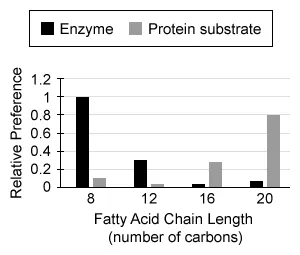
|
|
B.
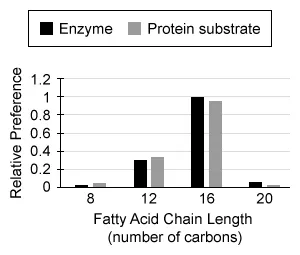
|
|
C.
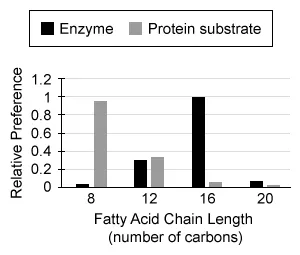
|
|
D.
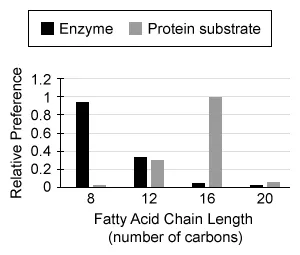
|
Explanation
Catalysts are molecules that increase the rates of chemical reactions without being consumed themselves. Enzymes are catalysts produced in living organisms. The reactant molecules upon which enzymes act are substrates, and the region on enzymes where substrates bind to undergo the reaction is called the enzyme's active site. For proper binding, the substrate must have a shape and charge complementary to the enzyme's active site.
The question describes an enzyme-catalyzed reaction in which the enzyme first attaches a lipid substrate to itself before transferring the lipid substrate to a protein. The size and shape of the lipid and protein substrates must be well-matched to the enzyme active site for binding to occur. Because the same lipid binds both the enzyme active site and the protein, both likely interact best with lipids of the same length. Therefore, the graph for Choice B, which shows both the enzyme and its protein substrate having similar chain-length preferences for 16-carbon chains, best represents the likely results.
(Choices A, C, and D) These graphs show poorly matched chain-length preferences for the enzyme and its protein substrate, which is an unlikely result since both the enzyme active site and the protein substrate bind the same lipid substrate.
Things to remember:
The shape and size of an enzyme active site must be well-matched to those of substrates for catalysis to occur.
Question
Which diagram below best represents the synthesis of ATP by ATP synthase in chloroplasts?
A.
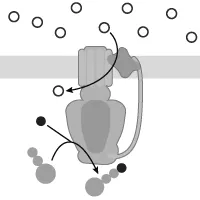
|
|
B.
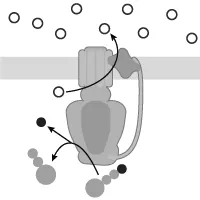
|
|
C.
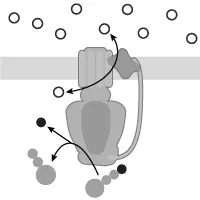
|
|
D.
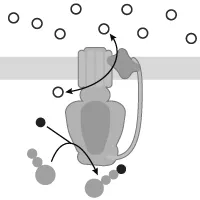
|
Explanation
Photosynthesis is the phototrophic transformation of light energy into chemical energy in the form of small sugar molecules. In this process, light absorption by chloroplast pigments (eg, chlorophyll) triggers electron flow through the electron transport chain connecting photosystems I and II. Water molecules are split into O2 and H+ (ie, protons), and protons are pumped from the stroma into the thylakoid space, thereby generating a proton gradient across the thylakoid membrane.
The proton gradient generated across the thylakoid membrane represents potential energy that can be harnessed by ATP synthase to power the synthesis of ATP. During this process, protons in the thylakoid space (ie, inside the thylakoids) cross the thylakoid membrane down their concentration gradient, through ATP synthase. This passage of protons causes movement of ATP synthase that results in the synthesis of ATP from ADP and inorganic phosphate. Therefore, only the diagram in Choice A correctly depicts ATP synthesis by ATP synthase.
(Choice B) During ATP synthesis, protons cross the thylakoid membrane down their concentration gradient (not against the gradient) through ATP synthase, thereby enabling the proton gradient to power the production (not breakdown) of ATP.
(Choices C and D) These diagrams show equal proton concentrations on both sides of the thylakoid membrane (ie, no gradient). A proton gradient is required for ATP synthesis by ATP synthase.
Things to remember:
Chloroplast ATP synthase requires inorganic phosphate, ADP, and a pH gradient across the thylakoid membrane to synthesize ATP.
Cell Communication & Cell Cycle Practice Test
Question
Cytokinesis, which is depicted in the image above, is the last of a sequence of steps occurring during mitotic cell division. Which of the following is NOT a stage of mitosis that occurs before cytokinesis during a single round of the cell cycle?
| A. Prophase | |
| B. Interphase | |
| C. Metaphase | |
| D. Anaphase |
Explanation
The eukaryotic cell cycle is divided into interphase and the mitotic (M) phase. During interphase, cells grow and replicate their DNA. Next, the stages of the M phase (ie, mitosis and cytokinesis) occur as follows:
-
Prophase: Replicated DNA condenses to form chromosomes, each consisting of two identical sister chromatids. The nuclear envelope breaks down, and mitotic spindle fibers form (Choice A).
-
Metaphase: Chromosomes attach to spindle fibers and align in the center of the cell (Choice C).
-
Anaphase: Sister chromatids are pulled apart by spindle fibers and move to opposite ends of the cell (Choice D).
-
Telophase and cytokinesis: Spindle fibers disappear, the nuclear envelope reforms around each set of chromosomes (forming two identical nuclei), the chromosomes decondense, and the parent cell undergoes cytoplasmic division (cytokinesis), producing two identical daughter cells.
The question asks for the answer choice that is NOT a stage of mitosis that occurs before cytokinesis during the cell cycle. Although interphase occurs before the mitotic phase, it is not part of mitosis. Therefore, interphase does NOT correspond to a phase of mitosis that occurs before cytokinesis.
Things to remember:
The mitotic phase of the cell cycle occurs in four distinct stages (ie, prophase, metaphase, anaphase, and telophase/cytokinesis) and results in the division of a single parent cell into two identical daughter cells. Interphase (which alternates with the mitotic phase) is the part of the cell cycle during which organelles and DNA are replicated as the cell prepares for mitosis.
Question
Cultured human cancer cells were split into two identical groups. One group was grown under normal culture conditions and was considered the control group of cancer cells. The second group underwent an irradiation treatment known to eventually trigger the death of most of the cells. Apart from irradiation, the irradiated cells were grown under conditions identical to those of the control cancer cells. Several days after irradiation of the second group, but while most of the cells in both groups were still alive, both the control and the irradiated cancer cells were analyzed to determine their cell cycle phase distribution. Which of the following statements most likely explains how irradiation triggers reduced survival of irradiated cells?
| A. Genetic instability is a characteristic of cancer cells, and mutations caused by irradiation prevented the irradiated cells from being able to complete the S phase. | |
| B. Irradiation stimulated cells to progress into the M phase and initiated the steps leading to apoptosis of the irradiated cells. | |
| C. Increased function of the cell cycle checkpoints in the irradiated cells caused the cells to progress too rapidly into the S phase, leading to their death. | |
| D. Cells in the G0/G1 phases replaced the cells that were initially killed by irradiation, and so these cells became more prevalent in the irradiated group. |
Explanation
The cell cycle is highly regulated by various proteins to ensure that cells move into the appropriate phases, do not stay in one phase too long, and do not move to a new phase before they are ready. Various factors (eg, radiation) can lead to nonfunctional, overexpressed, or underexpressed regulatory proteins that disrupt the cell cycle, potentially leading to cancer and/or apoptosis (programmed cell death).
The question describes an experiment investigating responses of human cancer cells to irradiation and asks how irradiation likely triggers reduced survival of the human cancer cells studied. Exposure of cells to radiation can disrupt the cell cycle. Such disruptions can potentially promote early entry into the mitotic (M) phase (ie, cell division phase) of the cell cycle, as occurred in the irradiated cells in the study.
After abnormal entry to the M phase, the cancer cells might continue dividing at abnormally rapid rates, or they might be identified as abnormal at a checkpoint, triggering apoptosis.
(Choice A) If the irradiated cells were unable to complete the S phase, the percentage of cells in the S phase would be greater, not less, than the percentage of cells in the G2/M phases.
(Choice C) Increased cell cycle checkpoint function would act to prevent (not promote) premature S phase entry.
(Choice D) Cells in the G0/G1 phases were less (not more) prevalent in the irradiated group.
Things to remember:
When regulation of the cell cycle is disrupted, cells may divide too rapidly (ie, become cancerous) or may alternatively undergo apoptosis (programmed death).
Question
Certain signal transduction pathways regulate whether stem cells remain as stem cells or differentiate into specific cell types. One such pathway, known to be important in regulating development in flies, is summarized in the diagram above, with pathway components defined in the diagram legend. A signaling polypeptide called Dpp is found to inhibit the transcription factor GATA in this signaling pathway. Based on the diagram, it is most likely that increased levels of Dpp in flies would
| A. cause stem cells to remain unchanged. | |
| B. stimulate stem cells to differentiate. | |
| C. induce transcription of the dFOG gene. | |
| D. reduce phosphorylation of STAT. |
Explanation
During signal transduction, information from an initial signal (eg, a ligand) is relayed to cell targets (usually receptors) and is often augmented by various proteins or second messengers within the cell. These actions initiate a cellular response, which can change if one or more steps in the signal transduction pathway is altered. Such alterations can influence the cell's phenotype.
In the diagram provided, the transcription factor GATA normally induces transcription of dFOG, which blocks differentiation. The question states that GATA is inhibited by the signaling polypeptide Dpp; such inhibition would prevent GATA from inducing dFOG transcription to prevent differentiation. As a result, differentiation will be stimulated when Dpp is present at sufficiently increased levels.
(Choice A) For stem cells to be remain unchanged, differentiation would have to be inhibited. This occurs when GATA is functional in the cell, but inhibition of GATA would have the opposite result (ie, stimulation of differentiation).
(Choice C) When GATA functions properly, dFOG is transcribed. If GATA is inhibited by Dpp, dFOG will not be transcribed.
(Choice D) The diagram shows that STAT is phosphorylated by the kinase before GATA function occurs. Therefore, a polypeptide that inhibits GATA (ie, Dpp) would not influence phosphorylation of STAT.
Things to remember:
Alteration of a signal transduction pathway can change the cell's response to the initial signal and result in a different cellular phenotype.
Heredity Practice Test
Question
The combined expression of several genes has been shown to influence the production of unique fingerprint patterns in each human being. These fingerprint patterns are fully formed approximately two months before birth. Which of the following would confirm that fingerprint pattern is an example of a trait exhibiting phenotypic plasticity?
| A. Fingerprint patterns always differ when comparing two individuals that are not related. | |
| B. Identical twins sharing all their DNA sequences still express different fingerprint patterns. | |
| C. If the genes responsible for coding fingerprint patterns are inhibited, fingerprint patterns will not form before birth. | |
| D. Each gene that codes for fingerprint patterns is transcribed at a different time point during embryonic development. |
Explanation
Gene expression and the resulting phenotypes in organisms may be affected by several factors, such as:
- The allele type inherited for a gene (eg, dominant or recessive)
- The presence of regulatory molecules (eg, transcription factors)
- Environmental factors (eg, temperature)
Phenotypic plasticity occurs when environmental differences cause individuals of the same species with similar or identical genotypes to express different phenotypes.
This question describes fingerprint pattern development in humans due to expression of several genes. If identical twins (ie, individuals who share 100% of their DNA sequences) still express different fingerprint patterns, this would confirm that this trait exhibits phenotypic plasticity. Accordingly, environmental differences experienced by each twin during development (eg, differences in position or access to nutrients within the mother) may alter fingerprint pattern, regardless of their genotype.
The remaining answer choices do not provide evidence that environmental differences in genetically similar individuals affect expression of unique fingerprint patterns.
(Choice A) Fingerprint patterns are unique in each person (regardless of family relationship), but this alone does not suggest that the trait exhibits phenotypic plasticity.
(Choice C) Inhibition of genes encoding fingerprint patterns only prevents formation of these patterns during development.
(Choice D) There is no information given to suggest that genes involved in the development of fingerprint patterns are transcribed at different time points during development.
Things to remember:
Gene expression may be affected by environmental influences, leading to phenotypic plasticity (same species individuals with similar/identical genotypes that express different phenotypes).
Question
The offspring formed by human sexual reproduction possess alleles that were present in the parental gametes. The formation of human gametes requires the separation of homologous chromosomes as well as separation of sister chromatids during meiosis.
Which graph below depicts the number of each kind of chromosome in male human offspring when nondisjunction of chromosomes or chromatids does NOT occur during gamete formation?
A.
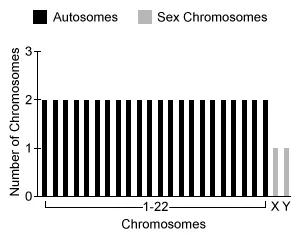
|
|
B.
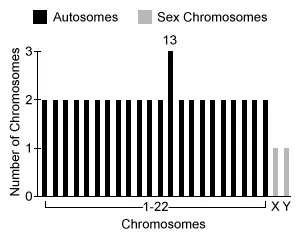
|
|
C.
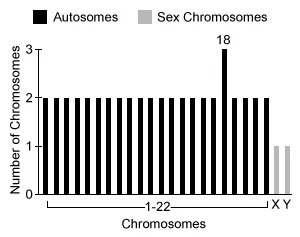
|
|
D.
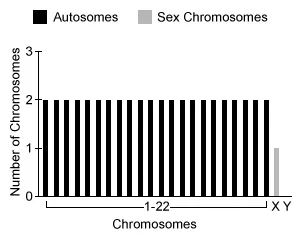
|
Explanation
Gametes (eggs and sperm) form via meiosis, a process of cell division in which a single diploid (2n) parental cell divides to form four haploid (1n) daughter cells. Meiosis occurs in two stages:
-
Meiosis I: Homologous chromosomes align and are separated to opposite poles of the cell by spindle fibers. Cytoplasmic division (cytokinesis) then yields two haploid cells.
-
Meiosis II: In each cell resulting from meiosis I, chromosomes align, and sister chromatids are pulled apart by spindle fibers. Cytokinesis then yields four haploid gametes.
Nondisjunction is an error in meiosis that arises when either homologous chromosomes or sister chromatids fail to separate, producing gametes with missing or extra chromosomes that can be passed to offspring, leading to genetic disorders in humans.
The question asks which graph best represents the number of chromosomes present in human offspring in the absence of nondisjunction. Humans typically have 23 pairs of chromosomes, including a pair of sex chromosomes (ie, XX in females or XY in males). Choice A depicts 22 pairs of autosomes (non-sex chromosomes) and a pair of sex chromosomes (one X and one Y), as would be found in male offspring when nondisjunction of chromosomes or chromatids did not occur.
(Choices B, C, and D) These graphs depict offspring possessing either extra copies of chromosome 13 or 18 or missing an X chromosome.
Things to remember:
During meiosis, nondisjunction occurs when homologous chromosomes (in meiosis I) or sister chromatids (in meiosis II) fail to separate, resulting in gametes with missing or extra chromosomes. Nondisjunction can cause genetic disorders in humans.
Question
The Durham breed of cattle (Bos taurus) possesses two codominant alleles, white and red, for an autosomal coat-color gene. If each codominant allele is expressed when present, what percentage of offspring are expected to produce coats containing red hairs and white hairs when true-breeding white Durham cattle are mated with true-breeding red Durham cattle?
| A. 0% | |
| B. 25% | |
| C. 75% | |
| D. 100% |
Explanation
The alleles inherited by an organism strongly influence the organism's phenotype. Mendel's laws of segregation and independent assortment explain patterns of inheritance based on transmission of dominant or recessive alleles from parents to offspring.
However, some traits exhibit non-Mendelian inheritance patterns. For example, traits controlled by genes on sex chromosomes or outside the nucleus are not inherited equally by males and females. Also, genes located close to each other on a chromosome are frequently inherited together, deviating from Mendel's law of independent assortment. Finally, traits may be controlled by multiple genes or alleles or influenced by the organism's environment or life history (ie, by epigenetics).
The question asks the expected percentage of offspring exhibiting coats with red hairs and white hairs when true-breeding white and true-breeding red Durham cattle are mated. Because codominant alleles are both fully expressed in heterozygotes, true-breeding white and true-breeding red cattle must be homozygous for white and red alleles, respectively.
Therefore, since all offspring inherit one allele from each parent, 100% of the offspring of white and red parents are expected to be heterozygous for the coat-color gene and exhibit coats with red hairs and white hairs.
(Choices A, B, and C) 0%, 25%, and 75% do not reflect the expected pattern of phenotype inheritance.
Things to remember:
Divergence from the expected (Mendelian) distribution of offspring phenotypes suggests non-Mendelian inheritance.
Gene Expression & Regulation Practice Test
Question
Some small interfering RNAs (siRNAs) are known to regulate gene expression in eukaryotic cells. In an experiment, two groups of eukaryotic cells were each stimulated to take up different siRNA molecules (siRNA 1 or siRNA 2). Both of these siRNAs are known to affect gene expression. A third group of cells was stimulated to take up control siRNAs, which were engineered to have no effect on gene expression. After 72 hours, the mRNA levels for three genes were measured in each group. The graph below shows the results of this experiment.
Which of the following statements about these siRNA molecules is best supported by the results presented in the graph?
| A. siRNA 1 binds and causes the degradation of Gene B mRNA; siRNA 2 binds and causes the degradation of Gene A mRNA. | |
| B. siRNA 1 binds and causes the degradation of Gene A mRNA; siRNA 2 binds and causes the degradation of Gene B mRNA. | |
| C. Both siRNA 1 and siRNA 2 bind the mRNA molecules produced from all three genes. | |
| D. Both siRNA1 and siRNA 2 have identical nucleotide sequences. |
Explanation
When genes are transcribed into mRNA transcripts, regulation of gene expression occurs post-transcriptionally (ie, at the level of the transcript). MicroRNAs (miRNAs) and small interfering RNAs (siRNAs) are small, noncoding elements that perform post-transcriptional regulation. These small RNAs often form complexes with specific proteins and bind complementary nucleotide sequences on target mRNA molecules, causing mRNA degradation or inhibition of translation.
In this question, two groups of eukaryotic cells were each stimulated to take up different siRNA molecules that affected gene expression. A third group of cells took up control siRNA that did not affect expression. The graph shows that, compared to cells with control siRNAs, cells that took up siRNA 1 exhibited decreased Gene A mRNA levels, whereas cells that took up siRNA 2 exhibited decreased Gene B mRNA levels.
Therefore, siRNA 1 binds and degrades Gene A mRNA, whereas siRNA 2 binds and degrades Gene B mRNA (Choice A).
(Choice C) siRNA 1 only decreased Gene A mRNA levels and siRNA 2 only decreased Gene B mRNA levels. In addition, neither siRNA 1 nor siRNA 2 affected Gene C expression compared to control cells. Therefore, siRNA 1 and siRNA 2 do not bind mRNA produced from all three genes to regulate their expression.
(Choice D) siRNA 1 and siRNA 2 decrease mRNA expression for different genes ( Genes A and B ), indicating that the nucleotide sequence complementary to the target mRNA is different (not identical) in each siRNA molecule.
Things to remember:
Small interfering RNAs (siRNAs) are small, noncoding RNA molecules that bind target mRNA molecules, often causing mRNA degradation.
Question
In a gene expression study, scientists extracted RNA samples from eukaryotic cells. These initial samples contained all types of RNA found within the cells. They then added a specialized solution containing microscopic magnetic beads to the RNA samples. These beads consisted of synthetic pieces of single-stranded DNA made up of repeated thymine nucleotides. These thymine nucleotides are able to form hydrogen bonds with mature mRNA molecules that have been modified in the nucleus. Once bound to mRNA, the beads were collected using a specialized magnet, allowing mature mRNA to be isolated from the initial RNA samples. Which of the following best describes how these beads most likely bound the mRNA molecules?
| A. The thymine nucleotides of the beads formed hydrogen bonds with the nucleotides in the poly-A tails of the mRNA molecules. | |
| B. The thymine nucleotides of the beads formed hydrogen bonds with many different types of nucleotides in the coding regions of the mRNA molecules. | |
| C. The thymine nucleotides of the beads formed hydrogen bonds with all three nucleotides of the universal start codons (AUG) in the mRNA molecules. | |
| D. The thymine nucleotides of the beads formed hydrogen bonds with the GTP caps of the mRNA molecules. |
Explanation
During eukaryotic gene expression, genes are initially transcribed into pre-messenger RNA (pre-mRNA) molecules in the nucleus. Prior to translation, pre-mRNA undergoes a series of modifications to form mature mRNA, including the splicing (ie, removal) of noncoding introns as well as the addition of a 3' poly-adenine (poly-A) tail and a 5' GTP cap.
Specifically, both the poly-A tail and GTP cap allow mature mRNA to exit the nucleus and enter the cytoplasm for translation. Once in the cytoplasm, the poly-A tail and GTP cap help prevent mRNA degradation and allow ribosomes to recognize and bind mRNA.
In this question, magnetic beads were added to eukaryotic RNA samples. These beads contained single-stranded DNA pieces made up of repeated thymine (T) nucleotides that bound mature mRNAs. Because all mature mRNAs have poly-A tails, the thymine nucleotides of the beads likely formed complementary hydrogen bonds with the adenine nucleotides of the mRNA poly-A tails.
(Choice B) In base pairing, thymine always pairs with adenine. Therefore, thymine nucleotides would not form hydrogen bonds with many different nucleotide types in mRNA coding regions.
(Choice C) All mRNA molecules have a universal start codon (AUG) where translation begins. Although one thymine nucleotide could bond with the adenine (A) in the start codon, thymine would not be complementary to uracil (U) or guanine (G).
(Choice D) Although all mature mRNAs have GTP caps, this region does not contain nucleotides complementary to thymine.
Things to remember:
In eukaryotic cells, pre-mRNA transcribed in the nucleus is modified to produce mature mRNA. Modifications include splicing (removing) introns and adding a 3' poly-A tail and 5' GTP cap.
Question
miR-1 is a small, noncoding nucleic acid that is single-stranded in nature and has ribose-containing nucleotides. miR-1 has been found in animal heart muscle cells (cardiomyocytes), which contract to facilitate the pumping action necessary to circulate blood throughout the body. Scientific research has proven that miR-1 posttranscriptionally regulates the production of HSP60, a protein known to prevent damage to other proteins in high-heat environments. Which of the following would best describe how miR-1 acts to regulate HSP60 expression in cardiomyocytes?
| A. miR-1 is read by ribosomes to generate HSP60 proteins. | |
| B. miR-1 pairs with proteins to form the ribosomes that will translate HSP60 proteins. | |
| C. miR-1 binds to complementary sequences on HSP60 mRNA, inhibiting its translation into proteins. | |
| D. miR-1 transfers incorrect codons to the ribosome, resulting in permanently shortened HSP60 proteins. |
Explanation
When genes are transcribed into messenger RNA (mRNA) transcripts, gene expression can be regulated at the level of the transcript. This kind of posttranscriptional regulation can be carried out by many elements, including small, noncoding RNA molecules such as microRNAs (miRNAs) and small interfering RNAs (siRNAs).
miRNAs bind to complementary sequences on target mRNAs to inhibit target gene expression. miRNA exerts its gene-silencing effects by forming a complex with a specific protein. The miRNA component of the protein-miRNA complex then binds to the complementary region of the target mRNA to either degrade the target mRNA or to block ribosome access to the target mRNA (prevents translation). In this way, miRNAs control which genes are expressed and which genes are not.
In this question, miR-1 most likely binds to complementary sequences on HSP60 mRNA, thereby inhibiting its translation into protein. Therefore, miR-1 posttranscriptionally regulates the expression levels of HSP60 in cardiomyocytes.
The following RNAs have other functions:
-
(Choice A) mRNA carries the protein-coding message in DNA within the nucleus to the ribosome in the cytoplasm. This occurs because eukaryotic DNA does not leave the nucleus.
-
(Choice B) Ribosomal RNA (rRNA), along with associated proteins, forms ribosomes.
-
(Choice D) Transfer RNA (tRNA), functions during translation and transfers the correct amino acid to the ribosome; this new amino acid is added to a growing polypeptide chain.
Things to remember:
MicroRNAs are small, noncoding RNA molecules that bind to complementary sequences on target mRNA to degrade the target mRNA or block it from being translated by the ribosome.
Natural Selection Practice Test
Question
Many unique types of domestic chickens have been identified throughout the world. Although these unique chicken types often exhibit many phenotypic differences, they can still interbreed with one another and produce viable and fertile offspring when introduced. These findings indicate that
| A. separation of different domestic chicken types in different locations caused them to evolve into distinct species with unique phenotypes. | |
| B. selection for different phenotypic traits has varied among chicken populations, leading to the evolution of different domestic chicken types that have remained members of the same species. | |
| C. many phenotypic variations in domestic chickens have led to changes in gamete production, preventing the exchange of genetic information among different domestic chicken types. | |
| D. multiple unique ancestral species gave rise to different domestic chicken types that could each fill different ecological niches. |
Explanation
A species is a group of organisms in which members can interbreed with one another to produce viable, fertile offspring. In contrast, reproductively isolated organisms (ie, those that cannot interbreed to produce viable, fertile offspring) are generally considered to be different biological species.
In this question, many unique types of domestic chickens are found throughout the world. Although these chickens often exhibit many phenotypic differences, they can still interbreed to produce viable, fertile offspring when introduced. Therefore, the selection of different phenotypic traits has likely varied among these chicken populations, leading to the evolution of different domestic chicken types expressing unique phenotypes. However, because these different types can still successfully interbreed, they have remained members of the same species.
(Choice A) Because these different domestic chicken types are able to produce viable, fertile offspring, they are still the same species. Therefore, separation of different domestic chicken types in different locations likely did not cause them to evolve into distinct species (ie, through allopatric speciation).
(Choice C) Because different chicken types can still successfully interbreed, they can still exchange genetic information with one another. This indicates that they likely exhibit similar forms of reproductive processes, including gamete production via meiosis.
(Choice D) Different domestic chicken types interbreed and are therefore the same species. Therefore, they likely originated from a single domestic chicken ancestor, not multiple unique ancestral species that gave rise to chicken types able to fill different ecological niches.
Things to remember:
A biological species is defined as a group of organisms in which members can interbreed and produce viable, fertile offspring.
Question
A group of biologists observing maggot flies in the same geographic area of North America noticed variation in the fruit on which the flies lay their eggs. One group of flies—which the biologists termed "apple flies"—prefer to mate and lay their eggs on apple fruits. The other group of flies—termed "hawthorn flies"—prefer to mate and lay their eggs on hawthorn fruits. Although hawthorn fruits are native to this area of North America, the apple fruits were not introduced until the mid-1800s. The biologists attribute these behavioral differences in flies to a scent preference for each fruit type with a genetic basis. In addition, they found that apple fruits ripen earlier than hawthorn fruits and that apple flies mature and begin to mate earlier than hawthorn flies. Through various scientific experiments, they were able to confirm that apple flies and hawthorn flies are different species, one of which arose through sympatric speciation.
Based on the information given, which of the following is a plausible explanation for how sympatric speciation occurred in maggot flies?
| A. The apple flies and hawthorn flies are hybrids of several ancestral fly species that no longer exist. | |
| B. A geographic barrier separated the habitat of hawthorn flies into areas containing either only apple trees or only hawthorn trees, causing apple flies to evolve from hawthorn fly populations in areas containing only apple trees. | |
| C. All maggot flies originally mated and laid their eggs on hawthorn fruits but, as time passed, flies that matured earlier began to mate and lay their eggs on apple fruits and evolved into a different species that made use of only apple fruits for reproduction. | |
| D. Both species evolved at the same time from a common ancestor and, over time, exploited different food resources to better survive. |
Explanation
Sympatric speciation occurs when a new species evolves from a living ancestral species. Consequently, the ancestral species and the new species are reproductively isolated but still live in the same geographic area.
This question discusses maggot flies (ie, apple/hawthorn flies). These fly populations are different species, one of which arose through sympatric speciation—meaning that one must be the ancestral species and the other must be the new species.
Only hawthorn fruits were originally found in this area; therefore, all maggot flies were originally hawthorn flies as they laid eggs on hawthorn fruits. However, once earlier-ripening apples were introduced, some hawthorn flies that matured earlier were also able to mate earlier and lay eggs on the already ripe apples instead of still-unripe hawthorn fruits. Over time, apple flies likely evolved into a new species by acquiring genetic differences (eg, altered scent preference) and becoming reproductively isolated from hawthorn flies.
The other answer choices do not explain sympatric speciation in maggot flies.
(Choice A) No evidence is given that two different species were present (nor could create hybrids) prior to the appearance of apple flies and hawthorn flies.
(Choice B) Although a geographic barrier could have caused allopatric speciation, no evidence is given that a geographic barrier ever separated apple flies and hawthorn flies.
(Choice D) Divergent evolution occurs when two or more groups descended from the same common ancestor evolve different characteristics due to different environmental pressures and become new species. However, in this case, hawthorn flies are the common ancestor.
Things to remember:
Sympatric speciation occurs when a new species evolves from a living ancestral species, with both species currently living in the same geographic area.
Question
Which of the following statements best represents artificial selection?
| A. Human activity can result in increased global temperatures, which causes certain arctic caribou populations to produce offspring earlier in the year than ancestral populations. | |
| B. Heterozygous humans carrying one copy of a recessive allele that would normally cause a specific lung disease when present in two copies may be protected from developing other forms of lung disease. | |
| C. A rodent species was displaced from their habitat and separated into two different populations when a city was built in a rural area, after which each rodent population developed unique molar teeth for grinding the different foods available in each new environment. | |
| D. A farmer breeds only strawberry plants bearing fruits with the highest sugar content so that future strawberry plant generations exhibit a high sugar content phenotype. |
Explanation
During artificial selection, humans purposefully select organisms with desirable traits for breeding to increase the frequency of these traits in future generations. In this way, humans can alter the genetic and phenotypic makeup of certain populations over time.
Accordingly, the best example of artificial selection in this question is that a farmer breeds only strawberry plants bearing fruits with the highest sugar content, which would allow strawberries produced by future generations of plants to continue to have a high sugar content (to be sweet).
(Choices A and C) Human activities (eg, activities leading to climate change, building a city) may disrupt wild populations. However, earlier offspring production in caribou due to climate change or the development of unique molar teeth in two rodent populations separated by a city were likely the result of these organisms undergoing natural (not artificial) selection in response to facing new selective pressures.
(Choice B) If having only a single copy of a recessive allele along with a dominant wild-type allele (ie, a heterozygote) protects against disease, this is called heterozygote advantage. However, disease protection in heterozygotes carrying one copy of an allele that would normally cause lung disease if it was present in two copies is not an example of artificial selection.
Things to remember:
Artificial selection occurs when humans selectively breed organisms exhibiting desirable traits, causing the frequency of these traits to increase in future generations.
Ecology Practice Test
Question
Bats are flying mammals that can locate quiet flying prey (eg, moths) in the dark by producing sound waves at certain frequencies that reflect off the prey back to the bat. Bats' ears are specialized to detect the reflected sound frequencies.
Some species of tiger moths (genus Cisthene) carry toxins from plants they feed on. These toxins make the tiger moths distasteful to bats. Bats learn to avoid eating such toxin-carrying moths because the tiger moths produce sounds at specific frequencies that the bats can detect. Other moth species (genus Yponomeuta) produce sounds at the same frequency as those produced by tiger moths.
Which of the following claims is most consistent with this information?
| A. Yponomeuta moths that produce less sound are less likely to be eaten by bats. | |
| B. Bats cannot detect sounds at the frequency produced by Yponomeuta moths. | |
| C. Yponomeuta moths that sound like tiger moths to bats produce more surviving offspring. | |
| D. Tiger moths and Yponomeuta moths obtain the same toxins by eating the same plants. |
Explanation
Signaling behaviors can affect organisms from the same or different species and increase organisms' reproductive success (ie, evolutionary fitness) in various ways (eg, improving self-defense, increasing the ability to obtain food and find mates).
According to the question, certain toxin-carrying tiger moths are distasteful to bats and produce sounds at frequencies detected by bats. Therefore, bats learn to avoid eating these tiger moths.
However, some moths of the genus Yponomeuta produce sounds at the same frequency as the tiger moths that are distasteful to bats. Because bats tend to avoid eating the distasteful tiger moths, bats would also avoid eating Yponomeuta moths that produce the same frequencies, making it more likely that such moths would survive to reproduce.
Therefore, a claim that is consistent with the presented information is that Yponomeuta moths that sound like tiger moths to bats produce more surviving offspring.
(Choice A) Yponomeuta moths that produce less sound are more likely (not less likely) to be eaten by bats. The bats would not receive as strong a signal to avoid Yponomeuta moths, and the bats can still target these moths using reflected sound.
(Choice B) Tiger moths produce sound frequencies that bats can hear, and Yponomeuta moths produce sounds at the same frequencies; therefore, bats can detect sounds at the frequency produced by Yponomeuta moths.
(Choice D) No information is given in the question indicating that tiger moths and Yponomeuta moths eat the same plants.
Things to remember:
Organisms produce signals that affect the behavior of other organisms. Signal production can benefit organisms in various ways that increase their reproductive success.
Question
The yellow mealworm beetle (Tenebrio molitor) is an ectothermic insect found in many different areas of the world and is often considered a pest because its larvae feed on grains stored for human consumption. Studies have shown that yellow mealworm beetle larvae can respond to cold temperatures by producing specialized proteins called thermal hysteresis proteins (THPs), which inhibit the formation of ice crystals in larval body fluids. In a 4-week experiment to test the effect of cold temperatures on THP production, one group of larvae was incubated at 22 °C for the duration of the experiment whereas other groups were exposed to a cold temperature (5 °C) for varying amounts of time. The concentrations of THP isolated from the body fluids of each group at the end of the experiment are shown in the above graph. Which of the following conclusions is best supported by the data in the graph?
| A. THP is expressed only in yellow mealworm beetle larvae that have been exposed to cold temperatures for at least 1 week. | |
| B. Yellow mealworm beetle larvae are constantly regulating their body temperatures through homeostatic mechanisms that generate internal body heat to promote adaptation to cold temperatures. | |
| C. Yellow mealworm beetle larvae are unable to perform cellular respiration at low temperatures, so THP levels must increase with lower temperatures to increase the chances of larvae survival. | |
| D. Yellow mealworm beetle larvae require more THP when exposed to low environmental temperatures to prevent freezing as their body temperatures drop. |
Explanation
Organisms regulate their internal body temperatures to maintain homeostasis and are classified as follows:
-
Endotherms can generate heat via internal metabolic processes (eg, the electron transport chain in cellular respiration), maintaining stable body temperatures regardless of environmental temperatures.
-
Ectotherms cannot regulate metabolic heat production, so their body temperatures vary depending on environmental temperatures. However, ectotherms may regulate their body temperatures through behaviors (eg, moving from shady to sunny areas).
Some ectotherms have also evolved adaptations that allow them to inhabit colder environments. For example, ectothermic mealworm beetle larvae have thermal hysteresis proteins (THPs) in their body fluids that inhibit internal ice crystal formation when temperatures are low.
The graph shows that relative THP concentration was highest in larvae exposed to cold temperatures for prolonged periods of time. Because they are ectotherms, mealworm beetle larvae likely require more THP when exposed to low environmental temperatures to prevent freezing as their body temperatures drop.
(Choice A) Because the graph shows that larvae still express a small amount of THP at 22 °C, THPs do not require cold temperatures to be expressed.
(Choice B) Because mealworm beetles are ectotherms, they would not be able to regulate their body temperature internally via homeostatic mechanisms.
(Choice C) All organisms, including mealworm beetles, must perform some form of cellular respiration to generate cellular energy (ie, ATP).
Things to remember:
In contrast to endotherms, ectotherms cannot metabolically regulate their body temperatures and must use behaviors or adaptations to adjust for environmental temperature fluctuations.
Question
Grasshoppers living in a Wisconsin field community consume vegetation as a source of energy. A researcher observed that the number of grasshoppers in this community decreased when predators were present and increased when predators were absent. The researcher proposed that the abundance of wolf spiders, a main predator of grasshoppers in this community, was the limiting factor for the grasshopper population. Which of the following forms of data, in addition to assessing the number of grasshoppers, would be most suitable for the researcher to collect each day on a test portion of the field?
| A. Grasshopper feeding activity (minutes/day) | |
| B. Amount of wolf spider eggs produced (g/spider) | |
| C. Density of adult wolf spiders in the area (number of spiders/m2) | |
| D. Amount of vegetation (number of plants/m2) |
Explanation
Communities consist of populations of organisms that interact with one another in various ways (eg, feeding relationships between trophic levels), which may cause communities to change over time.
In this question, the number of grasshoppers living in a field community decreased when predators were present and increased when predators were absent. The researcher proposed that the abundance of wolf spiders, a main predator of grasshoppers, was the limiting factor for the grasshopper population. The limiting factor in a population has the most impactful role in restricting population size.
Accordingly, the most suitable form of data for the researcher to collect in order to test this proposal would be the count of adult wolf spiders in the area (number of spiders/m2). For example, high numbers of wolf spiders would cause increased grasshopper consumption, thereby decreasing the grasshopper population size.
(Choice A) Examining grasshopper feeding activity would help only to determine the amount of vegetation consumed by grasshoppers per day and would not provide information about how the abundance of wolf spiders impacts grasshopper populations.
(Choice B) Examining only the amount of wolf spider eggs (not hatched into adults) would not provide information about how the number of predatory adult wolf spiders may affect grasshopper populations.
(Choice D) Because grasshoppers consume vegetation, determining the amount of vegetation in the area would provide information about food availability for grasshoppers, not about how the abundance of wolf spiders may impact grasshopper populations.
Things to remember:
Within biological communities, interactions between populations of organisms may cause changes (eg, changes in population size or access to resources) to the community's structure as time passes.
Make the AP Biology Exam Feel Like Practice
Our AP Bio practice tests and quizzes, which cover both MCQs and FRQs*, teach you to spot trick answers, handle time pressure, and build real confidence. Practice with realistic exam simulations so test day feels like just another practice run.
One-Click AP
Biology Quizzes
Practice Under Real Exam Conditions
Study with Exam-Aligned Questions
Ready to Get Started?
Achieve Higher Scores with Smart Study Tools
Detailed Explanations for Every AP Biology Question
Understand the "why" behind every answer with step-by-step breakdowns. Each AP Bio practice question and FRQ includes colorful visuals that boost memory retention and understanding by up to 60% especially crucial for pre-healthcare and pre-STEM majors who'll need to recall this information years later on professional exams like the MCAT or SAT. Get simplified explanations and tips for spotting trap answers so you actually remember complex biology concepts instead of just memorizing them.
Flashcards & Notes That Help You Actually Remember
Create digital flashcards to practice the concepts you struggle with most, like how ATP synthase produces energy or the difference between competitive and noncompetitive inhibition, helping you remember information months later, not just for the next unit quiz. Use My Notebook to organize key concepts from AP Bio practice questions in the format that works best for you, whether that’s bullet points for Hardy-Weinberg equilibrium problems, diagrams showing energy flow through trophic levels, or detailed notes on how DNA replication differs in prokaryotes vs eukaryotes. One-click transfer from explanations to your flashcards or notebook means everything you need stays in one organized place.
Track Your Progress & Target Weak Spots
See exactly where you stand with detailed performance tracking across all your AP Biology practice tests, and practice questions. Our analytics dashboard shows which topics you're crushing and which ones need more work. Focus your study time on actual weak areas, stop wasting time on stuff you already know, and watch your scores improve.
Pick Your AP Biology Prep Package
From targeted AP Bio practice questions to a complete prep course with video lessons, choose what fits your study style and budget.
Everything you need to pass the AP Bio exam
Pick Your AP Biology Prep Package
From targeted AP Bio practice questions to a complete prep course with video lessons, choose what fits your study style and budget.
Everything you need to pass the AP Bio exam
500+ AP Biology Practice Questions (MCQs)
Custom AP Bio Practice Tests & Quizzes
Progress Tracking Dashboard
Pick Your Study Topics
Smart Study Planner
Realistic FRQ Practice with Scoring Guide*
500+ AP Biology Practice Questions (MCQs)
Custom AP Bio Practice Tests & Quizzes
Progress Tracking Dashboard
Pick Your Study Topics
Smart Study Planner
Realistic FRQ Practice with Scoring Guide*
Score-Predicting Full-Length AP Bio Mock Exam*
Print and Digital Study Guide
120+ Check-for-Understanding Questions
Expert-led Video Lessons
* Coming Winter 2025/Spring 2026
AP Bio Practice Test Reviews
Here’s what our students have to say after using our practice tests to study for their AP Biology exam:
UWorlds multiple choice questions are similar to the ones on the official AP exam and allowed me to time myself for each question. This was very helpful for me as I was able to answer questions faster and could finish the questions on the actual exam. The explanations for each question went in-depth and gave important details pertaining to events in the timeline. Through this, I was able to gain important skills for the exam and get a 5.
Before, I had a hard time studying and staying focused because it was just boring, but now with UWorld, not only can I focus, but I actually feel motivated to learn!
The explanations were clear and I could practice the question based on units. I got a 5 in the end!! So, I think it’s very helpful and I’ll be using it to study for my future exams 🙂 You guys provide so many different functions to help students like me, and I really appreciate it, it’s really worth the money.
AP Biology Practice Tests & Questions:
Frequently Asked Questions (FAQs)
Are UWorld's AP Biology practice tests realistic compared to the actual AP exam?
What makes UWorld’s AP Bio practice tests better than free online resources?
Do UWorld's AP Bio practice questions cover all the units and topics I need?
Yes. Our AP Biology question bank covers all 8 units from the College Board curriculum:
- Chemistry of Life
- Cell Structure & Function
- Cellular Energetics
- Cell Communication
- Heredity
- Gene Expression
- Natural Selection
- Ecology
You can practice across all topics or create custom quizzes focused on specific units where you need the most help. With 500+ practice questions covering everything tested on the AP Bio exam, you’ll get comprehensive preparation from start to finish.
